Dethonray Listening M1 DAC / Headphone Amplifier – Beautiful And Deep Music Sound
Dethonray Listening M1 is a $2599 USD DAC AMP made for desktop, with a really sleek design, ultimate sound architecture, and as we wil explore today, a sound that’s unlike anything we heard before. Given its price point, we will compare it to the best of the best sonic sources, including Smyth A16 Realiser (4000 USD), Analog Audio AAdac (4000 USD), iBasso DX320 MAX Ti (3499 USD), Astell & Kern A&Ultima SP2000T (2500 USD), Cyrus One Cast (2000 USD), and Keces S3 (1300 USD). As this is one unique DAC / Headphone Amplifier, we will also explore pairings with select IEMs and headphones, including Campfire Bonneville (1399 USD), HIFIMAN HE1000SE (3500 USD) and FIR Audio e12 Electron (1799 USD).
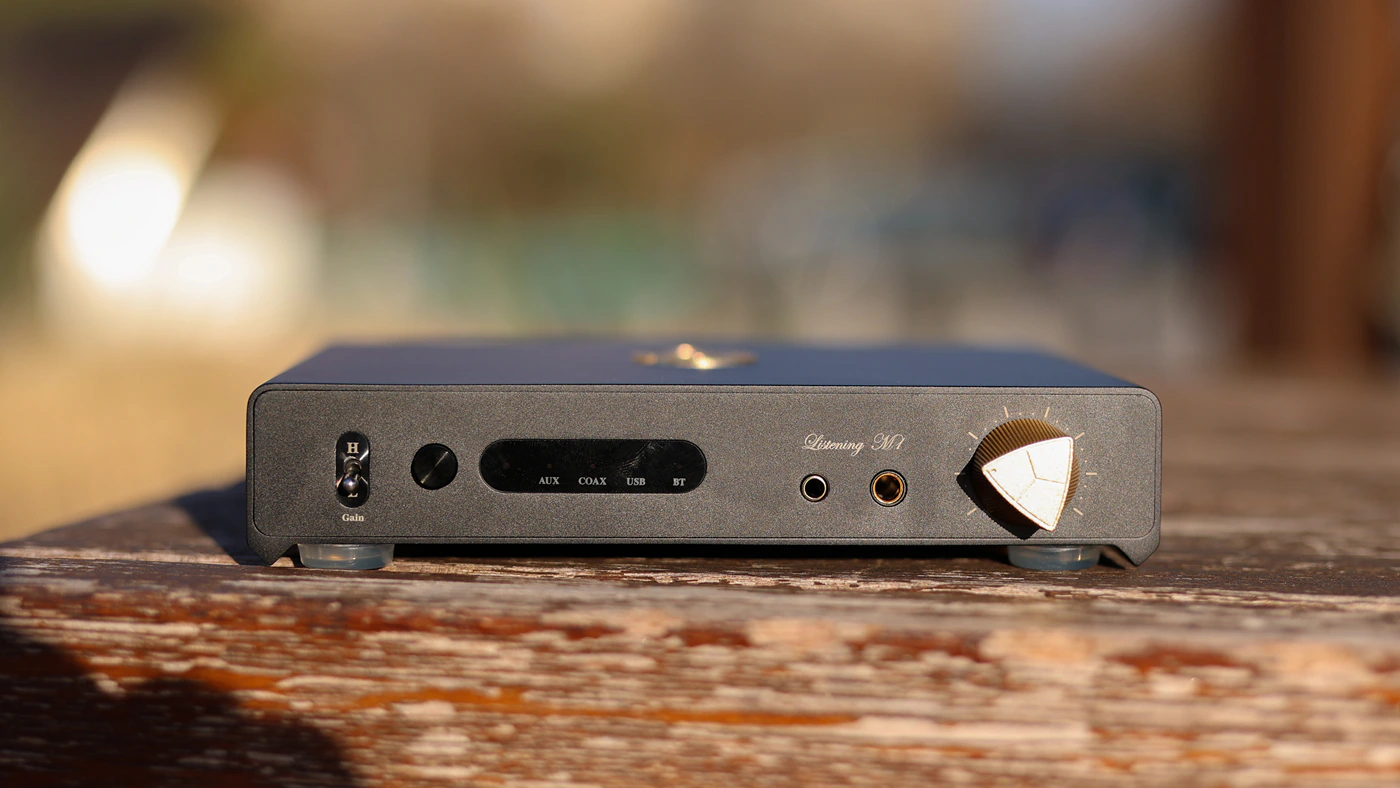
Introduction
Dethonray has always been a frontier company, developing products that challenge the market, and the way we think about music and what’s possible. The best example of this is the DTR1+ Music Player which I reviewed in the past, which came to challenge the design of most DAPs, by offering what was simply left out, a simple DAP with buttons for music playback, a simple but efficient UI, and with excellent sonic output, optimized just for music playback from a microSD card, all while having a tuning and signature that you simply couldn’t stop listening once you started. By making it fully user serviceable, they extended the lifespan of the DAP indefinitely, and today we also have a product that will surely outlive most of its peers, with M1 coming to challenge what can be done with a small form factor desktop DAC AMP, with insane driving power, for the space it takes on your desk. As an Amazon Influencer, I earn from qualifying purchases, and using the purchase links in my reviews helps me maintain this website and Youtube Channel. I thank Dethonray for providing the sample for this review, in exchange for my honest opinion.
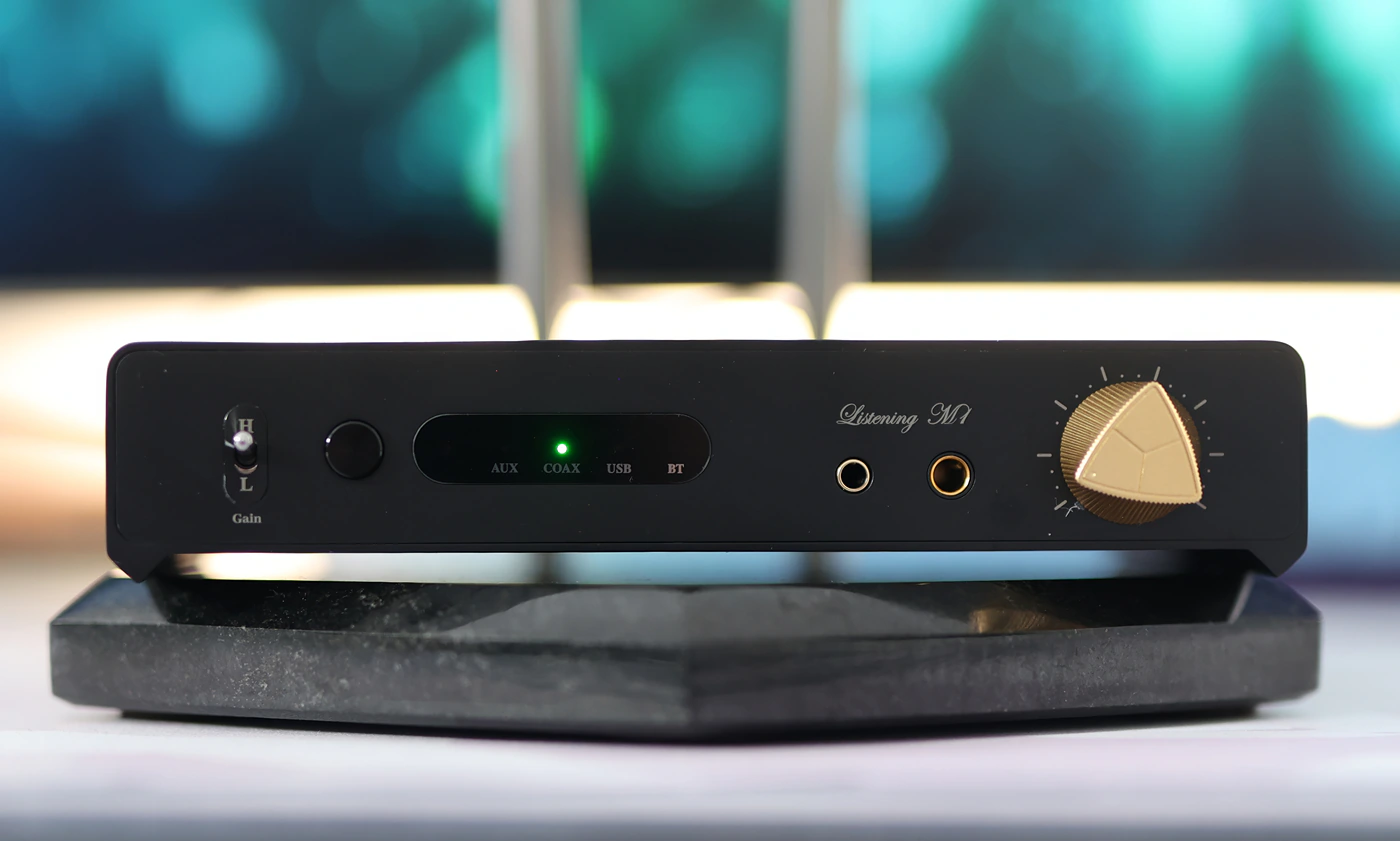
PROs – Superb Design, Exceptional Sound Quality, Outstanding Resolution, Deep Soundstage, Holographic Sound with focus on Depth, Full Volume control for Both IEMs and Headphones, No USB DAC Delay, Bluetooth LDAC Input, AUX Input, RCA Line Out with PREAMP and Variable Volume, Two Headphone Outputs, both 4.4mm Balanced and 3.5mm Single Ended, Headphone / IEM modes, USB 2.0 and 1.0 modes, Ultra Low Background Noise, Solid Power Brick that’s small but effective, Unit doesn’t get too hot during usage, Warm Sound, Full Body, Smooth Treble, Musical Midrange, Cohesive sonic signature / tuning, Excellent support from Dethonray and Mr. Anson.
Cons – On the Pricey Side, High / Low Gain is not instant, Headphone / IEM switch is at the back, you have to flip the unit to engage it, Unit gets warm during usage, No feet on the bottom from the factory, Cannot select Headphone or DAC output and both are active at all times.
Product Link
Check out the Official Dethonray Shop – https://www.aliexpress.com/item/1005006576672840.html
You can grab one from www.amazon.com here – https://amzn.to/3WcRsd5
Build Quality/Aesthetics
I love solid devices which rely on basic but proven shape and ergonomics to deliver the music experience we crave, and Listening M1 is a sleek, but attractive looking DAC AMP. While with DTR1+, you could see the golden accents eventually peeling off, the volume wheel, and the Dethonray logo at the top of the M1 are both made of metal that won’t get damaged in time, and which will look like new, even years after it has played its first song. The volume wheel is triangular at the front, becoming rounded at the base, allowing for a slightly more precise control, and unique looks.
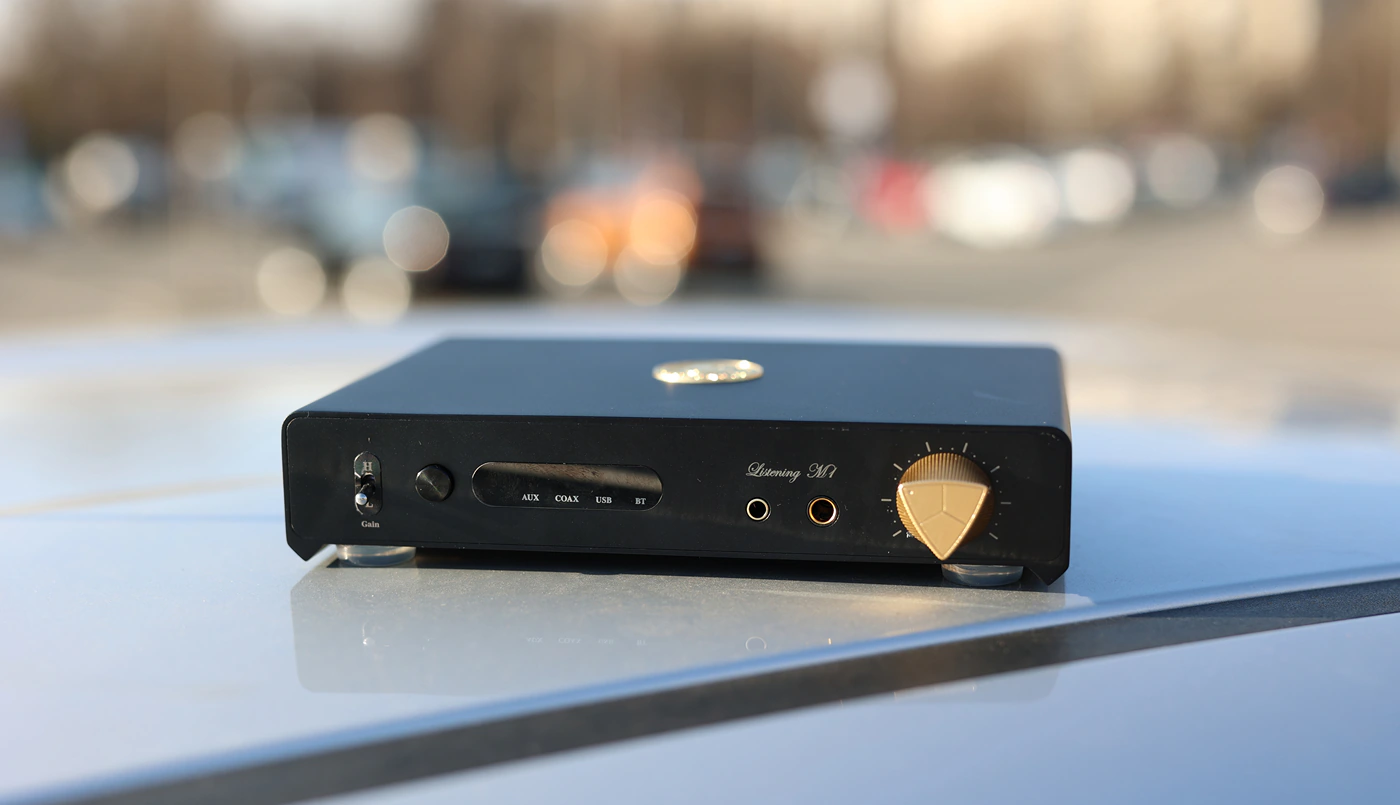
Although it looks small, Listening M1 has over 1200 components to ensure the best music playback, and there is a 12-channel independent analog power supply, and 8-channel digital power supply, to produce an efficient and stable power configuration for all your needs. At the heart of the DAC we have a AKM Flagship configuration of an AK4191 + 2 X AK4499EX to provide the ultimate velvet sound. The power supply is a highly customized converter which allows for usage with all power outlets around the world.
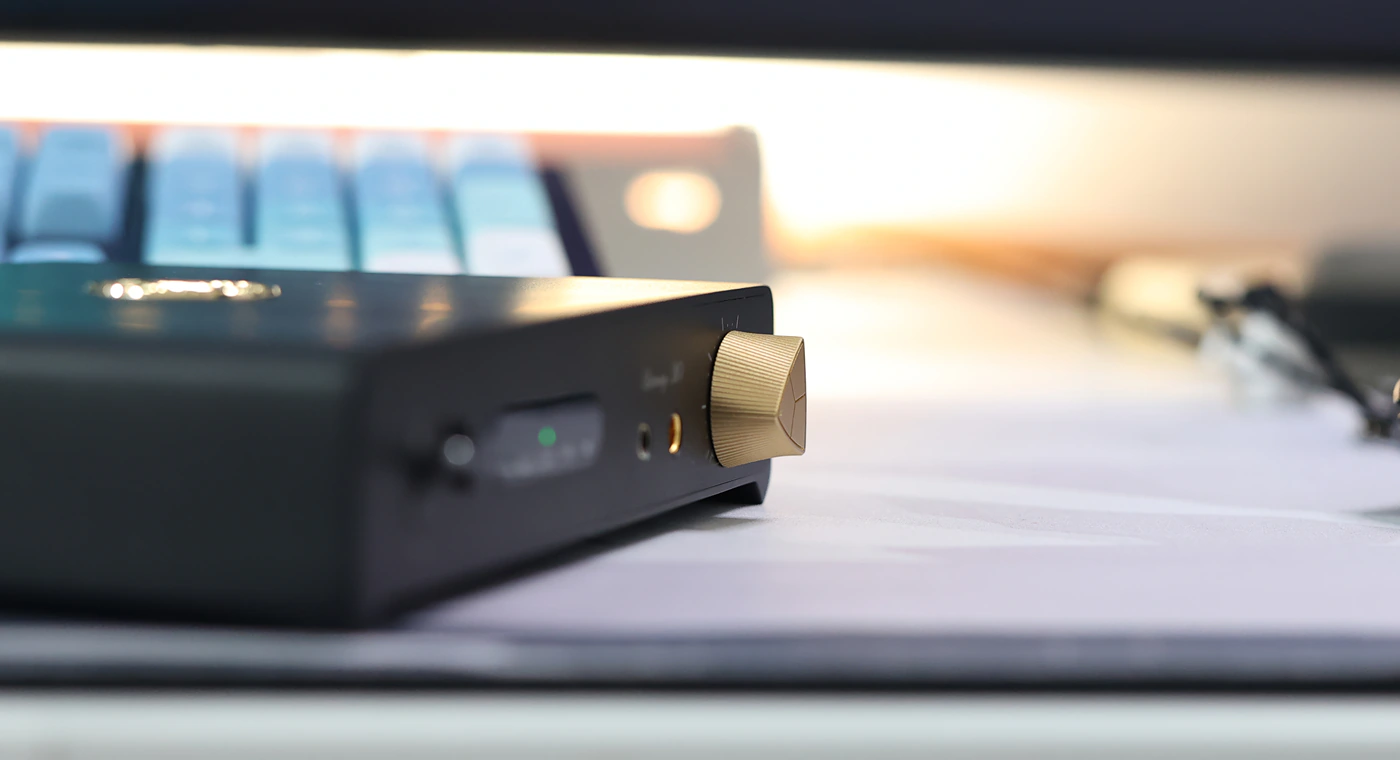
At the back of the unit we have three switches, including one for switching between IEMs and Headphones, which acts as both a gain and as a power delivery selector. As Dethonray Listening M1 has an incredibly high driving power, this is needed besides the gain selector, and in one unit, you have fine and granular volume control for IEMs and Earphones, but also explosive driving power for large headphones like HIFIMAN HE1000SE, or Audeze LCD-5. The volume starts at 9 o’clock, and goes all the way to 18.
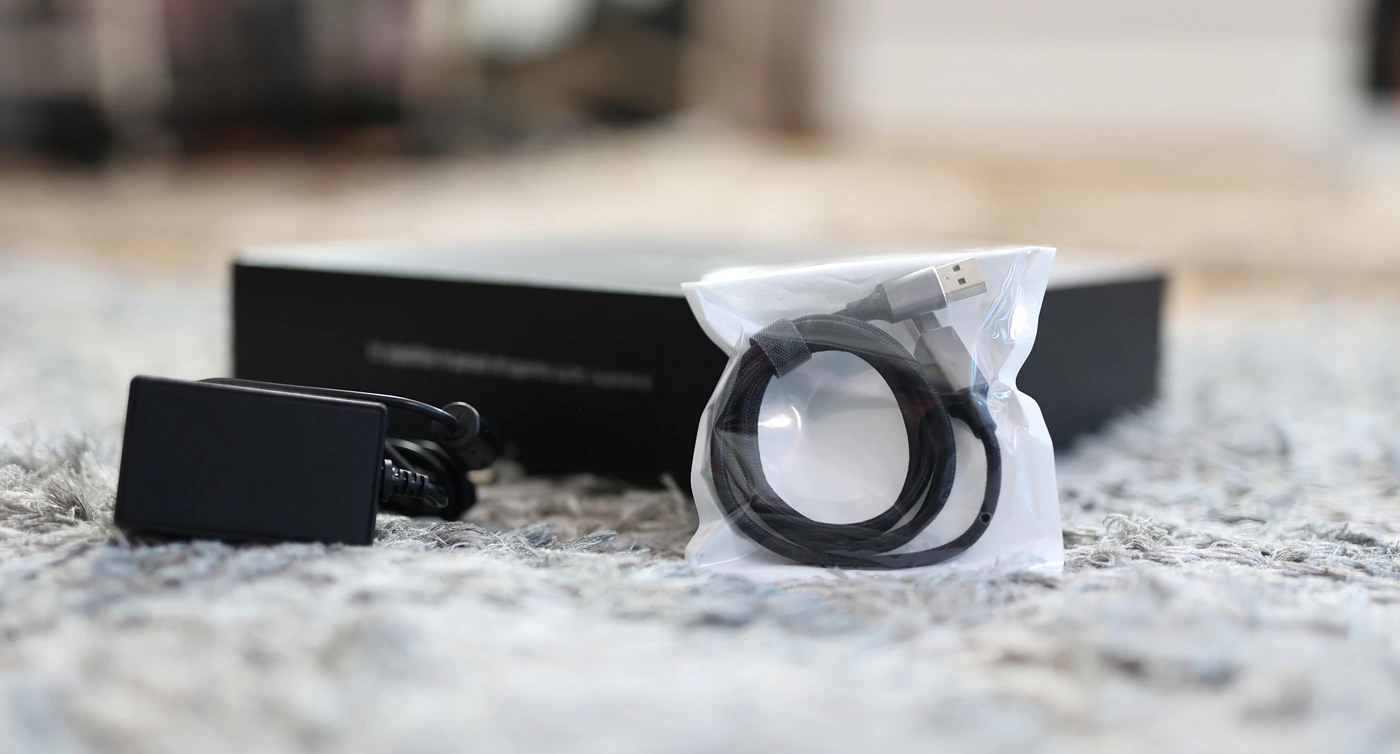
There is also a switch to select between USB 2.0 and USB 1.0, which is useful for gaming consoles, and other devices which don’t work with USB 2.0 drivers. The last switch switches between Reference and Direct modes, which we will explore in the sound part of the review. The input list includes a Coaxial input, a USB DAC input in Type-B input, along a Type-C input, and there is a separate Type-C input for upgrading the firmware of the Listening M1. There is a Bluietooth input, which works even with LDAC at the highest, and which works pretty well. As I got this question about FiiO Q15 recently, using the Bluetooth input does inherently have a bit of delay, but that is independent of the M1 or the smartphone, it is just how LDAC works, and the delay is around 500ms, which is audible, and at half a second, it is between 12 and 30 frames of content of delay. Even with aptX LL or Low Latency, the delay is around 190mS, which is not as noticeable, at around 3 frames of content of delay.
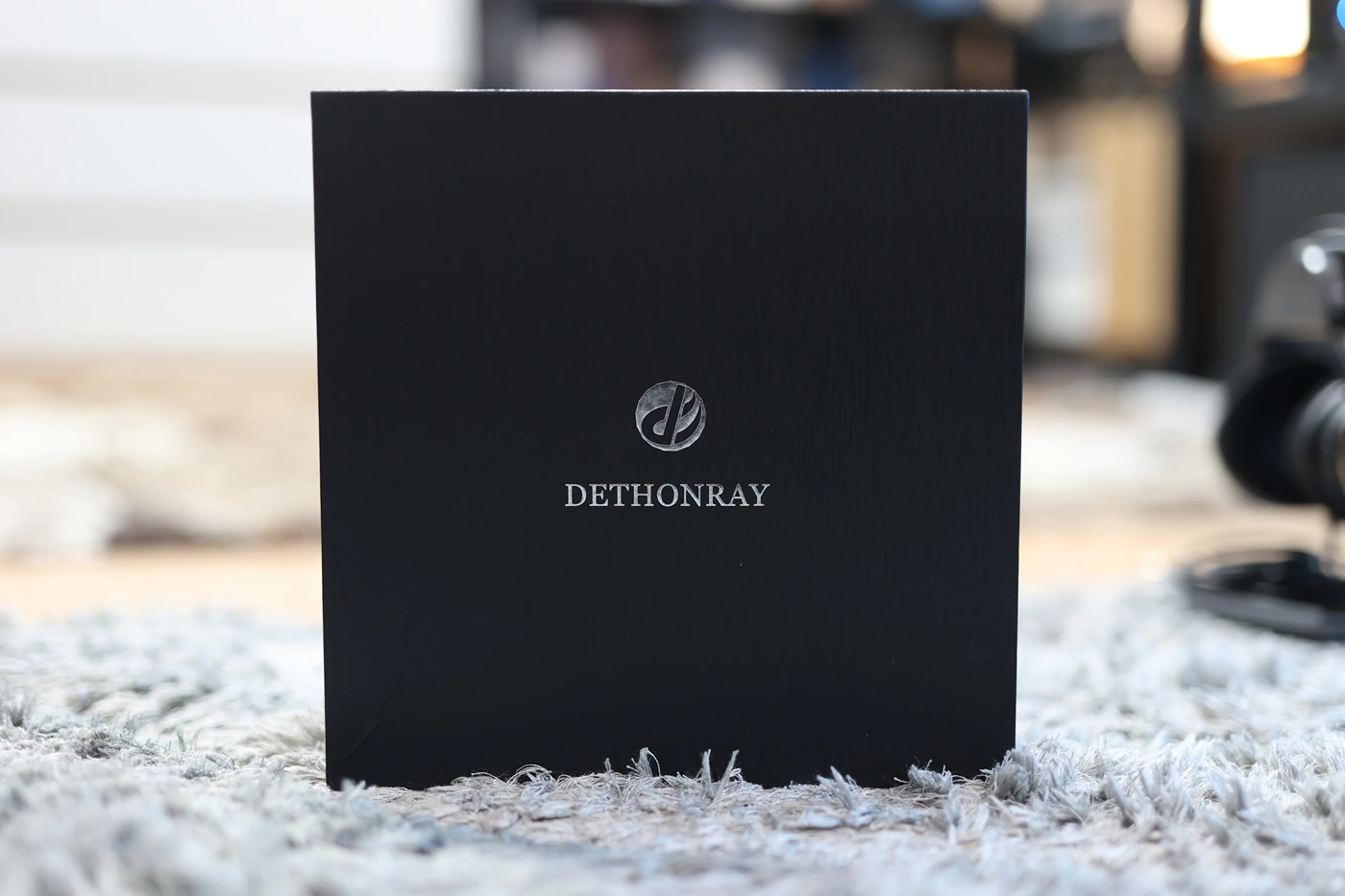
There is a line out in RCA format, and we have excellent technical numbers, including a THD lower than 0.02% for the USB input, the same as for the coaxial input, and we have a THD of <0.03% for the Bluetooth input. The Maximum power output is kept under secrecy but we do know the maximum voltage, which is 2.7 Vrms for an impedance of 32 OHMs, and 5 Vrms for an impedance of 32 OHMs. With the unit having a weight of just 620 grams, you can see how it would be more appealing than larger units like HIFIMAN EF600 or Aune S9C PRO both of which have similar or even lower power output for headphones.
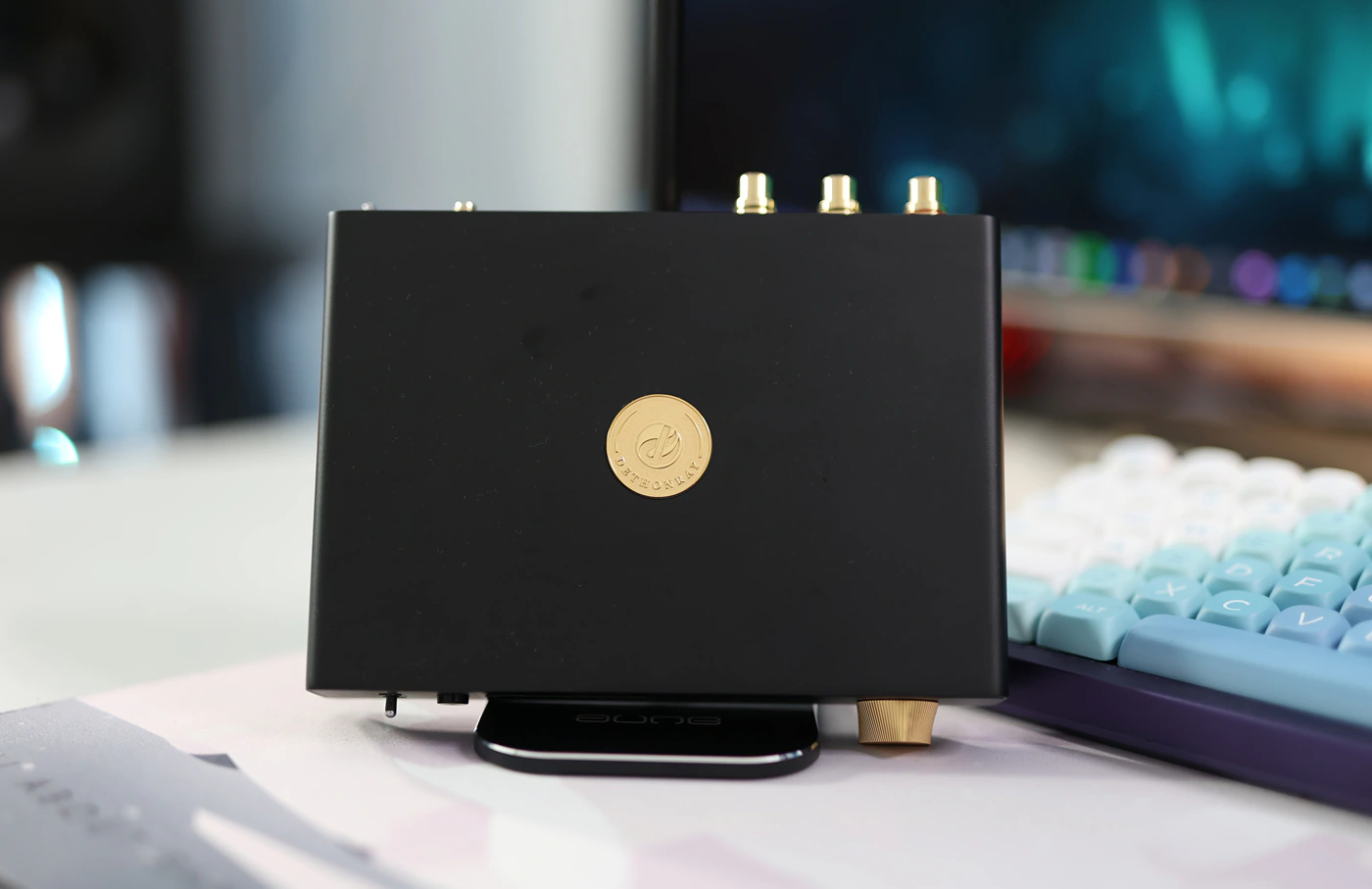
The RCA connectors at the back work as Aux inputs if the AUX input is selected, and line outs if any other input is selected. It works with absolutely no noise if your stereo amplifier or headphone amplifier has variable volume, and very little noise if the amp is running at all times at max volume. Dethonray Listening M1 works as a USB DAC with a preamp, the volume is variable. This is handy, for a desktop setup, and Listneing M1 is rather versatile, despite its small size. With Keces S300+, there is a bit of background noise that is typical of DAC/AMPs that are using an RCA connector, but S300+ runs at max volume at all times, while with HIFIMAN Prelude there is zero noise that I can hear with either IEMs or HIFIMAN HE1000SE. There is no degradation of the sound if you have a headphone connected at the same time as a pair of speakers in the line out in the back.
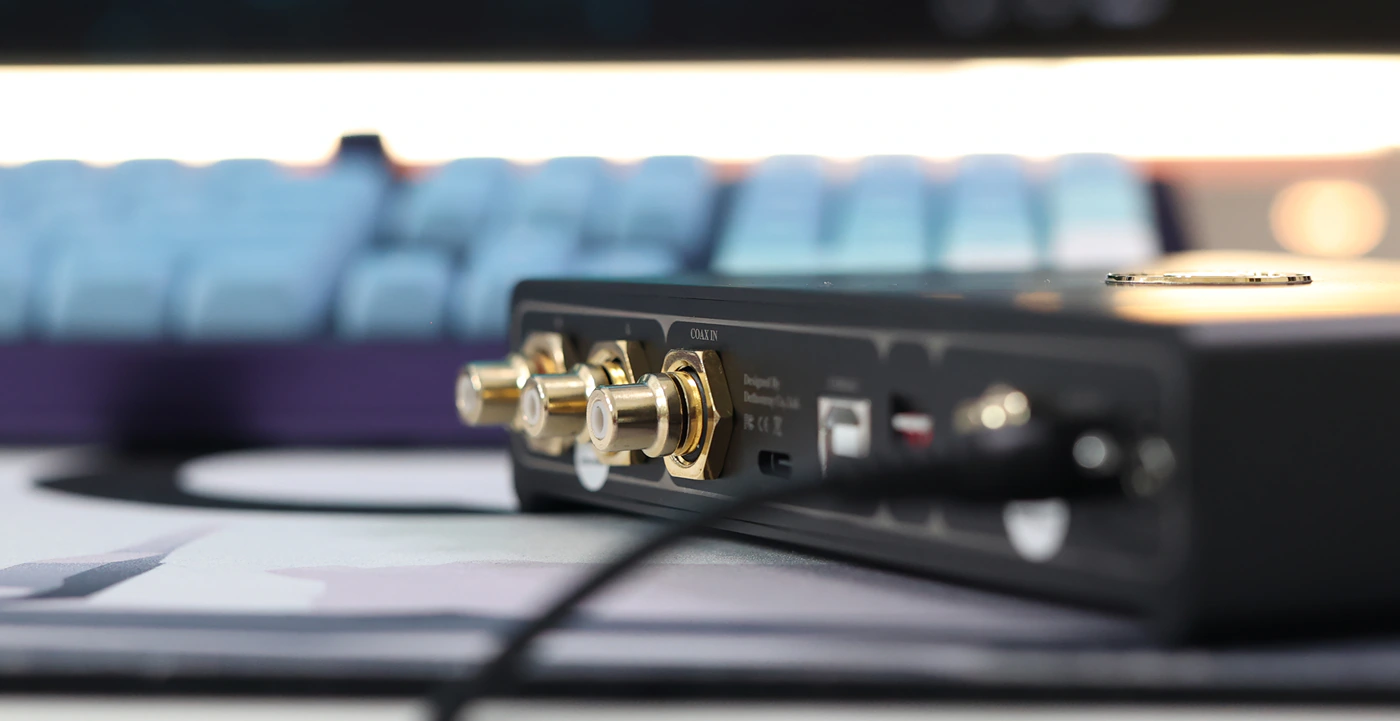
The sound comes through the Headphone output at the same time as the RCA Line out in the back, so you have to turn off the speaker / headphone amplifier separately, or disconnect the IEMs / Headphones when using each. There is zero hissing with IEMs, even with more sensitive IEMs, as long as you have Low Gain selected, and I suggest using mainly low gain, as otherwise you’ll have way too much volume and not enough control. Switching between High Gain or Low Gain mode at the back is done separately from the IEM / Headphone selector at the back, and you have to change the volume a bit for it to apply the new gain level, while all the switches at the back are pretty much instant.
USB DAC
As the USB DAC is the main way Listening M1 is intended to be used, I have extensively tested using it as a USB DAC, although I did dig in the Bluetooth and Aux inputs too. There are over 20.000 lines of code to make the software work, and the volume wheel is not analog, but a digital controller as there is a tiny bit of delay between turning it and the volume actually changing. There is a separate Type-C USB input to upgrade the firmware for Listening M1.
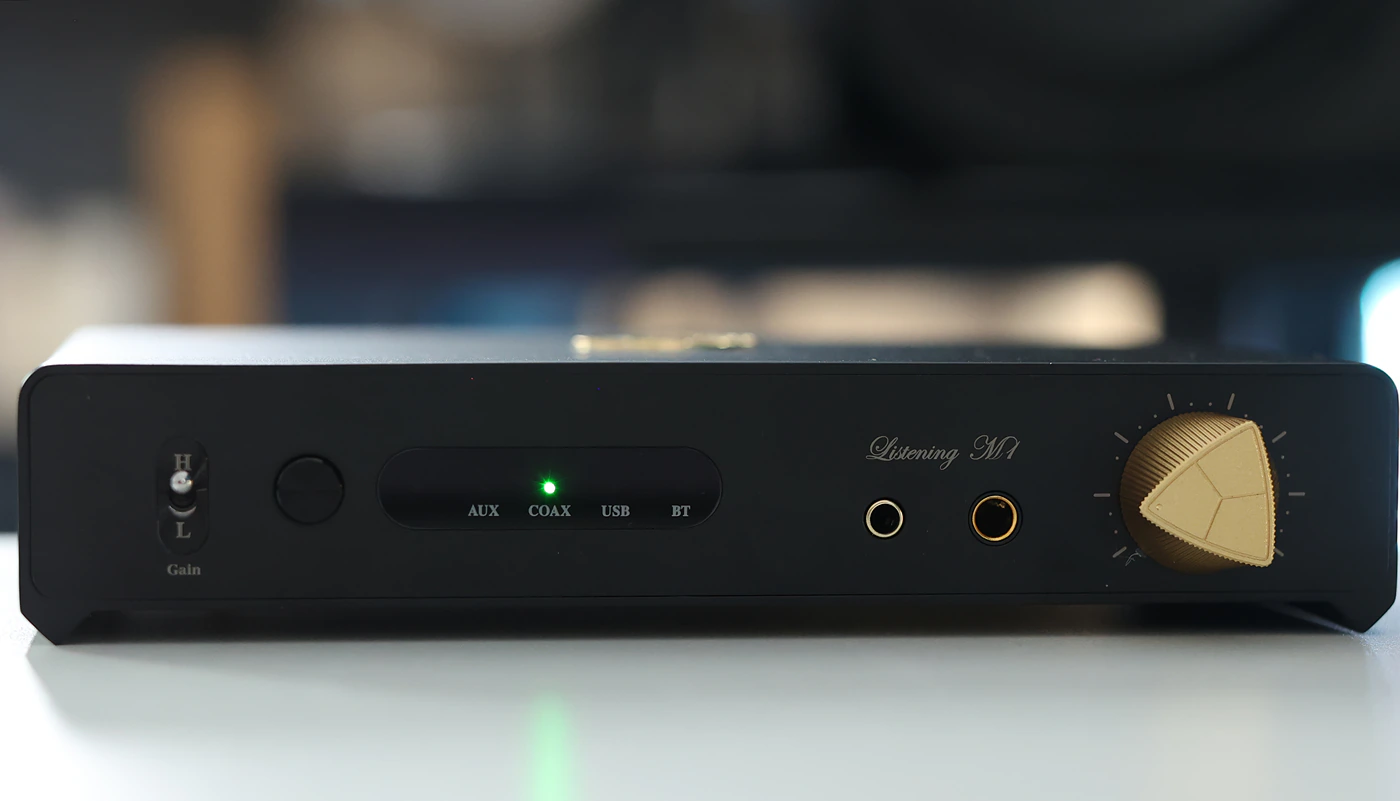
When using Dethonray Listening M1 as a USB DAC, I have noticed absolutely no USB DAC delay, sound is played instantly, You can hear that the DAC switches off while no sound is playing, to ensure the lowest noise level possible, and likely due to the way it is integrated. Happily, it reacts instantly, with no errors, there is no USB stuttering or any other issues. It is smooth, connects without additional drivers on Windows 11, and works flawlessly.
Sound Quality
Pairings – Between using Listening M1 to drive headphones, IEMs and speakers via an external stereo power amplifier, I have used it in about equal ratios, basically allowing myself time with IEMs like Sennheiser Ie900, Campfire Bonneville, FIR Audio e12 Electron, Dita Audio Perpetua, Westone MACH 60, Soundz Avant, and Spirit Torino Twin Pulse Beryllium. There is no hissing that is audible with either of those, regardless of the volume, and the background noise is very low, but you have to engage the gain to LOW and the switch at the back has to be set to IEMs to give you proper volume control. In this super low gain mode, I can use the volume up to maximum with most IEMs, although it does bring the volume quite loud. As far as the speaker setup goes, I’ve paired the Dethonray Listening M1 with Keces S300+ with either KLH Model Five and NHT C3, but also with other speaker amplifiers like Burson Funk and Buchard S400. The headphone pairings list includes HIFIMAN HE1000SE, Dan Clark Aeon 2 Noire, Sivga Luan, Sennheiser HD 660s2, Meze 109 PRO, iBasso SR3 and Aune Audio AR5000. There’s plenty of power to drive all of those headphones, and more, I had the chance to briefly pair the Listening M1 with Susvara, and it still had plenty of power, I wouldn’t judge it based on its size, M1 is compact, but delivers surprisingly strong volume and driving power for all headphones I have in my collection. Even Audeze LCD-5 is brought to extreme volumes, with good control and zero distortion, and M1 is one of the best sources I currently have for the Audeze flagship, as it gives them a smoother and fuller sound, while enhancing their ultimate precision and surgical resolution.
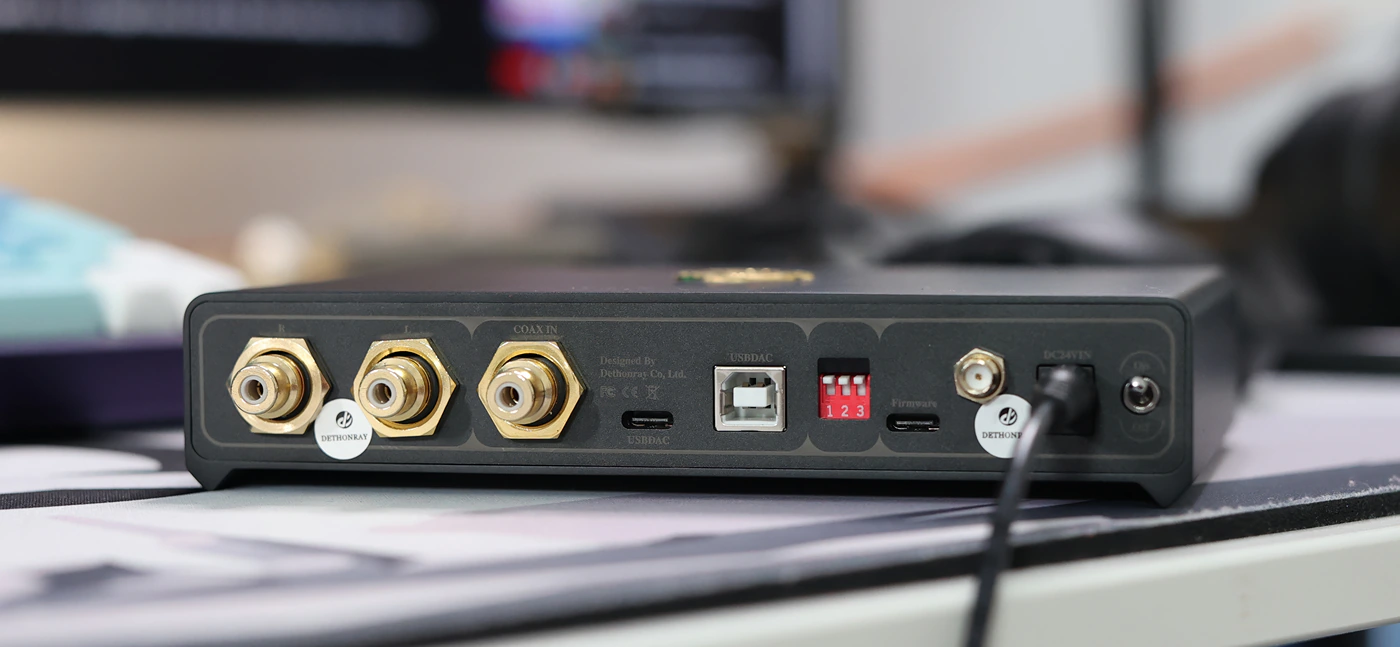
Overall Signature – I find it interesting that as a reviewer, there is no statistical reason for products with a similar tuning to be grouped together, but very recently I was writing about the new DX260 Music Player from iBasso, and Dethonray Listening M1 seems to be following a similar tuning and signature, smooth, warm, musical with a full, deep bass, and with exceptional dynamics and resolution. The main difference is that DX 260 is a DAP or Digital Audio Player, using a different DAC chip inside, but this just helps highlight how much more important is the implementation and desired tuning of a product, rather than the DAC chip used inside. Dethonray went for the most dynamics, yet smoothest, most precise yet most musical tuning they could achieve with Listening M1, and it has impressive depth to the sound. In fact, that’s the one word that would best describe M1, it is deep, giving you a clear exploration of each small cavern and space bit available in your music. Both male and female voices are enhanced in the same way, given emotion and an organic, smooth texture, while guitars are given the privilege of being the center of the stage if they are the foreground instrument, playing at the same level as the bass guitar, M1 effectively giving music a strong body and presence. The Line Out has a more neutral tuning, still organic and smooth, but it isn’t colored in any way, just precise, clean and crisp, with very little coloration.
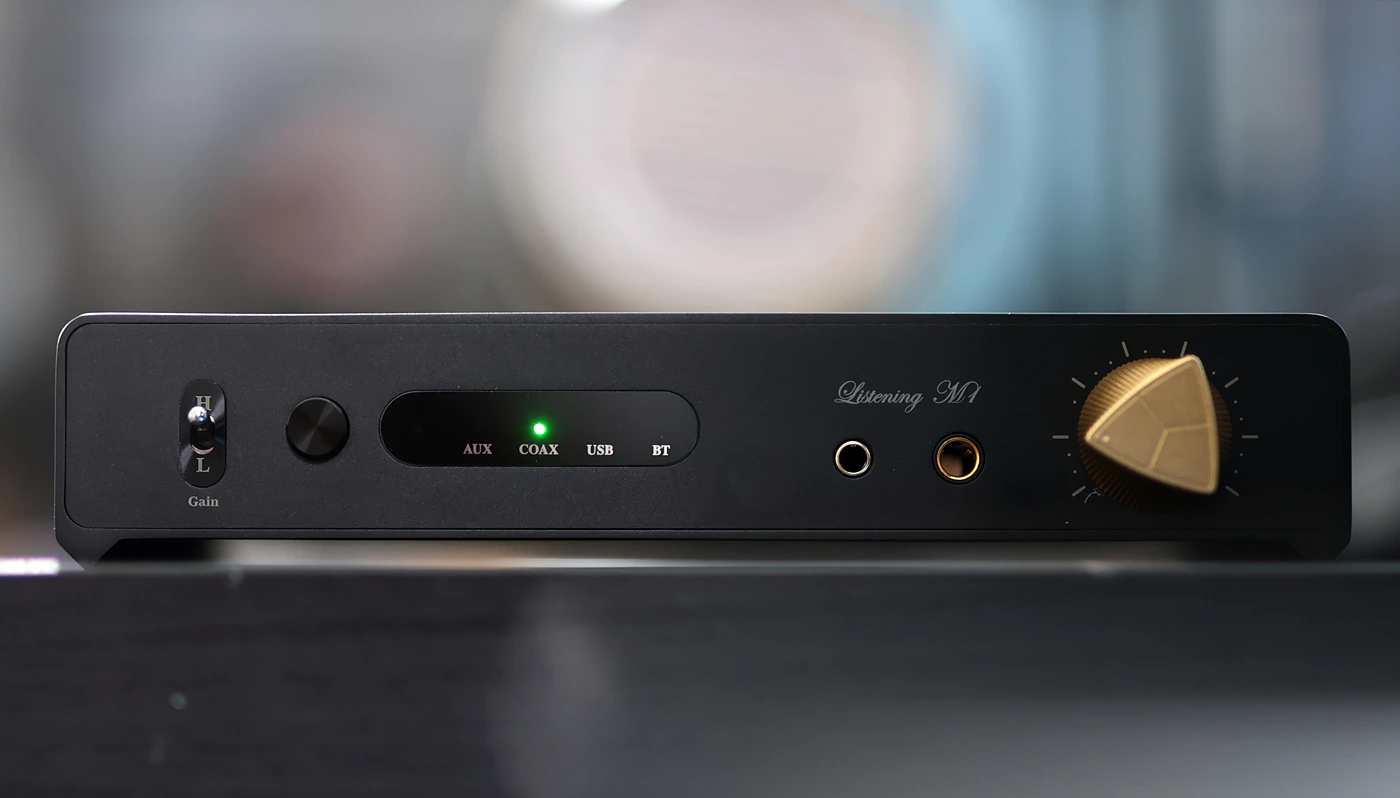
Bass – When you heart a warm and full sounding DAC/AMP after a good number of neutral sounding ones, it feels like bass is the central element at first, but the bass is just expressed in the correct amount and presence relative to the lore of the song, M1 opens a whole world of depth, impact and presence for many songs, and for all headphones and IEMs connected to it. Dethonray Listening M1 brings forward a whole layer of bass that you are generally aware exists outside of graphs, spectrograms, or musical visualizations, but now you can finally hear and understand what those mean. When you see a song having a strong presence down to 20 Hz, you hear that as a sublime punch, a rattle if it is textured, or a smooth presence if the song has the note played with a longer decay. The most interesting aspect of Listening M1 is that it brings those to light, but also makes them enjoyable and cohesive, the bass is not the forced or fatiguing kind, it is a full and smooth bass instead. The song I’ve been using the most recently for testing bass has been Apashe – Confess, as it has a rich amount off bass which gets quicker and quicker, and it helps me determine quite easily that Dethonray Listening M1 is fully able to keep up in the lows, regardless how fast the song is getting, but also present nuance, a bass in the ultra-lows 20-40 Hz will sound different from a mid bass, it highlights this difference and creates a layer of presence and punch for the whole song. I keep saying that M1 has a strong sub bass, and while that is true, it won’t turn a bright headphone into a basshead one, but it will unlock the full ability to reproduce bass of a headphone. It will tilt the tonality a bit to include more sub low and low end, and less upper midrange, and treble, but it is the headphone that’s otherwise fully capable to reproduce bass but was never powered properly to do as such. It does the same thing for IEMs, having a warm tinge to the sound.
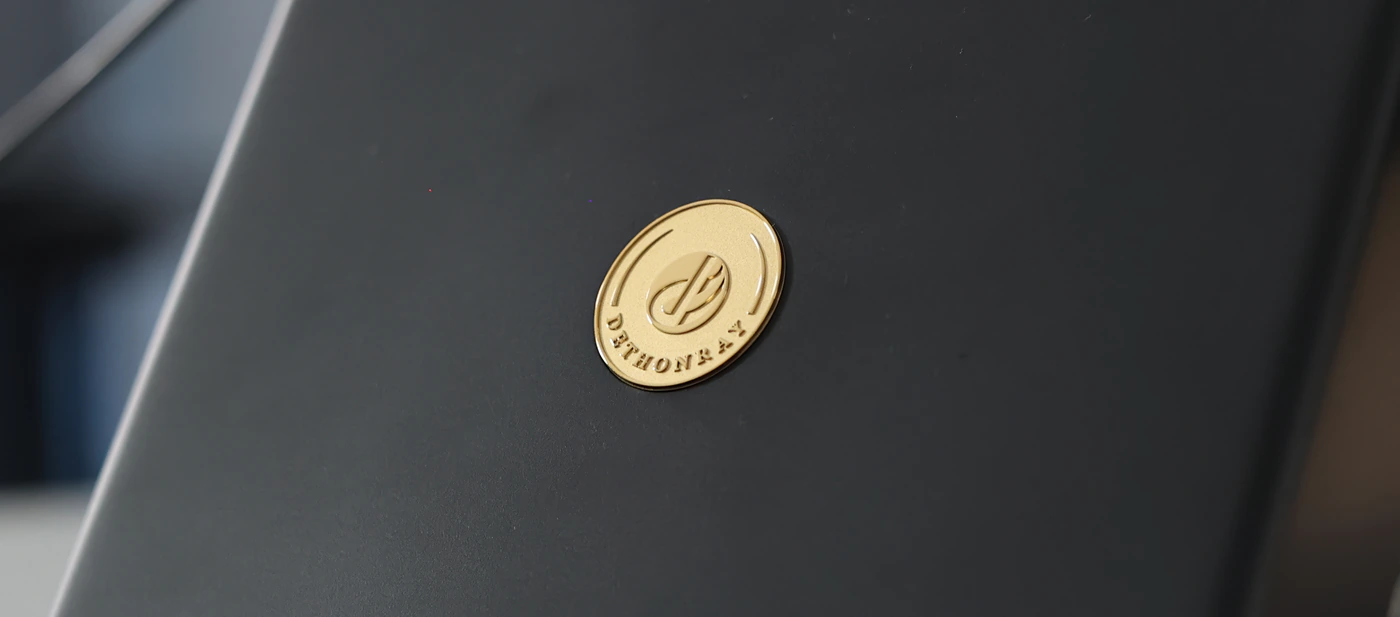
Midrange – With every single source out there, the most beautiful part of music is in the midrange, where music actually lives. While the low end adds presence, impact, punch and rattle / rumble, the midrange is where most instruments reside, where voices are, and where resolution truly lies. Dethonray Listening M1 has a warm, smooth, organic midrange, smoothing out the hard edges in every song it is playing, creating a cohesive, relaxed and laid back sound that’s able to make a pleasing experience even from death metal, punk or crunkcore songs. A good song to vibe to and is Closure In Moscow – Seeds Of Gold, where we have the daring and punchy lead guitar playing precise in the right area of the stage, next to the lead voice which is centered all around the center of the sage, and with the background guitars filling the space right behind. The drums are played all across the stage, with the cymbals being audible all across the background, and with the bass guitar filling the entire space of the song. Speaking of space, the whole song is spaced evenly in width, but very deep, there’s an extreme layering and clean definition of each instrument, allowing for micro details and effects to easily be audible, but thanks to the relaxed and clean character of M1, those are never too sharp or combative with the rest of the song, rather filling and coloring the space between instruments, everything combining together in an emotional and cheerful way. There’s a tendency of M1 to dampen the upper midrange slightly, while pushing forward the lower midrange slightly, which takes away the edge in most music and helps build this relaxed character it has. The tilt is not strong enough to take away the lead guitar energy in rock or metal, it is just enough to tackle away the sharp and aggressive edge.
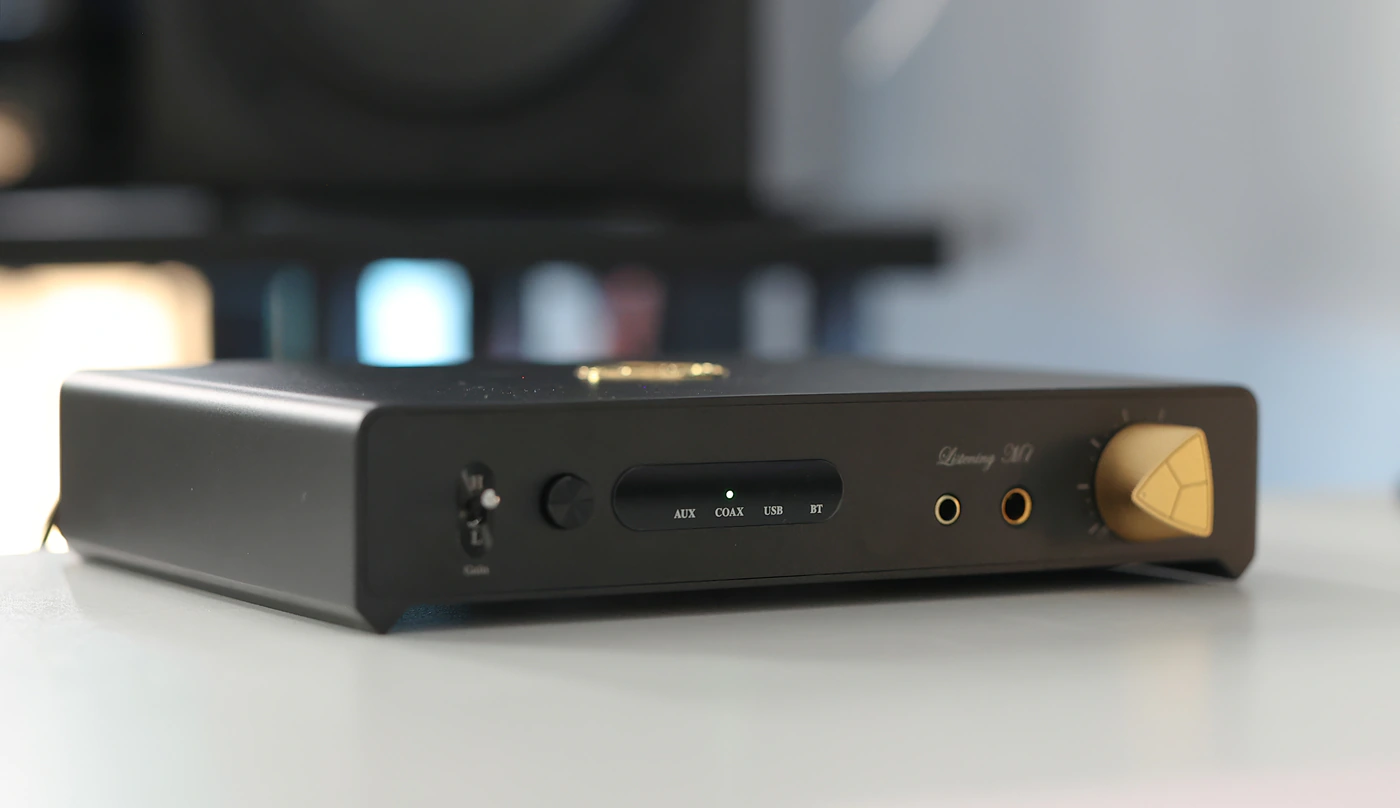
Dynamics / PRaT / Textures – Dethonray M1 is the kind of DAC/AMP that has a smooth, waxy and punchy texture, with outstanding dynamics. This means that most music is presented without the typical digital glare / aggressive edge you hear with a bright DAC, but the dynamic range is still full, plenty and rich. The textures are rich and plentiful too, but never harsh or fatiguing, the waxy character I mentioned before indicates that the sound stays relaxed and whenever a trumpet is sang, you hear the texture, it is evident, but the spiky and arguably fatiguing part of the texture is gone. As a unit with a relaxed tuning, you can expect a slightly longer musical note decay, a strong sustain, and a slightly softer attack, the unit can make all materials fed to it musical and clean, without reducing the resolution level, but all whilst keeping the sound crisp and clear.
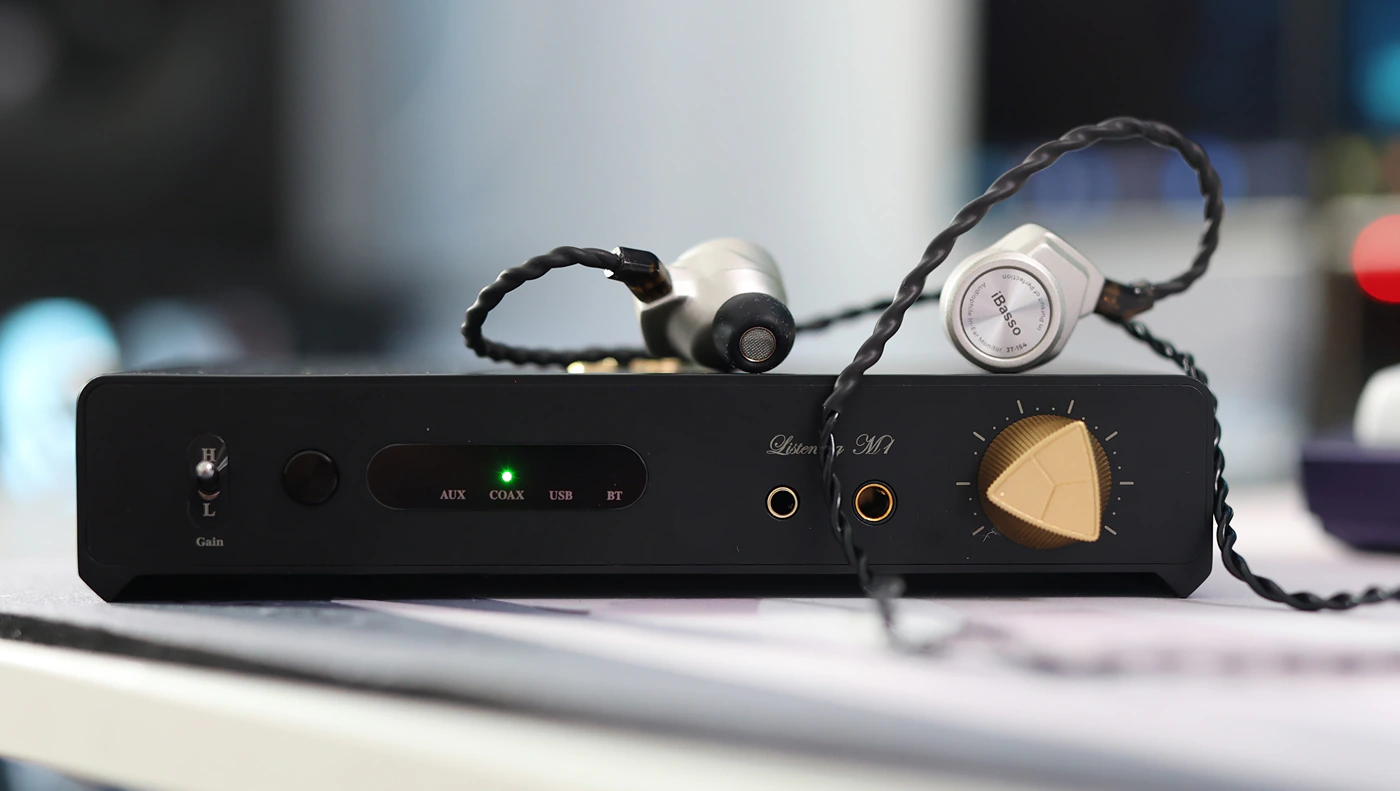
Soundstage – Dethonray M1 can be accurately described as deep sounding, it has extraordinary depth and separation along that depth, layering and clarity for the staging. There’s a good sense of instrument separation, which is aided by the voluptuous and full bass, clean and smooth midrange, and the smooth treble, you can hear each instrument playing in its own space, the width is natural, it extends naturally, without stretching instruments or forcing a narrow / intimate song to be thrown out of the room, but allows a large orchestra to travel in all directions, each instrument taking its own place in the open space. For example, earlier Dance Gavin Dance songs and whole albums were mastered narrowly, such as their song “I’m Down With Brown Town“, where all instruments are nicely separated, but they extend naturally around me, just a few meters away, everything staying well focused and the whole song happening clearly in a limited, intimate space, including cymbals and drums. More recent songs from DGD, from their Afterburner album, such as the “Strawberry’s Wake” extend nicely in width and depth, creating adventurous travels for the special effects, lead guitars and even rhythm guitars, which are layered in multiple layers for each ear, creating a really holographic and impressive presentation. Dethonray M1 has the ability to show a song as it was recorded, if your music sounds too wide or too narrow, that will be the album’s fault.
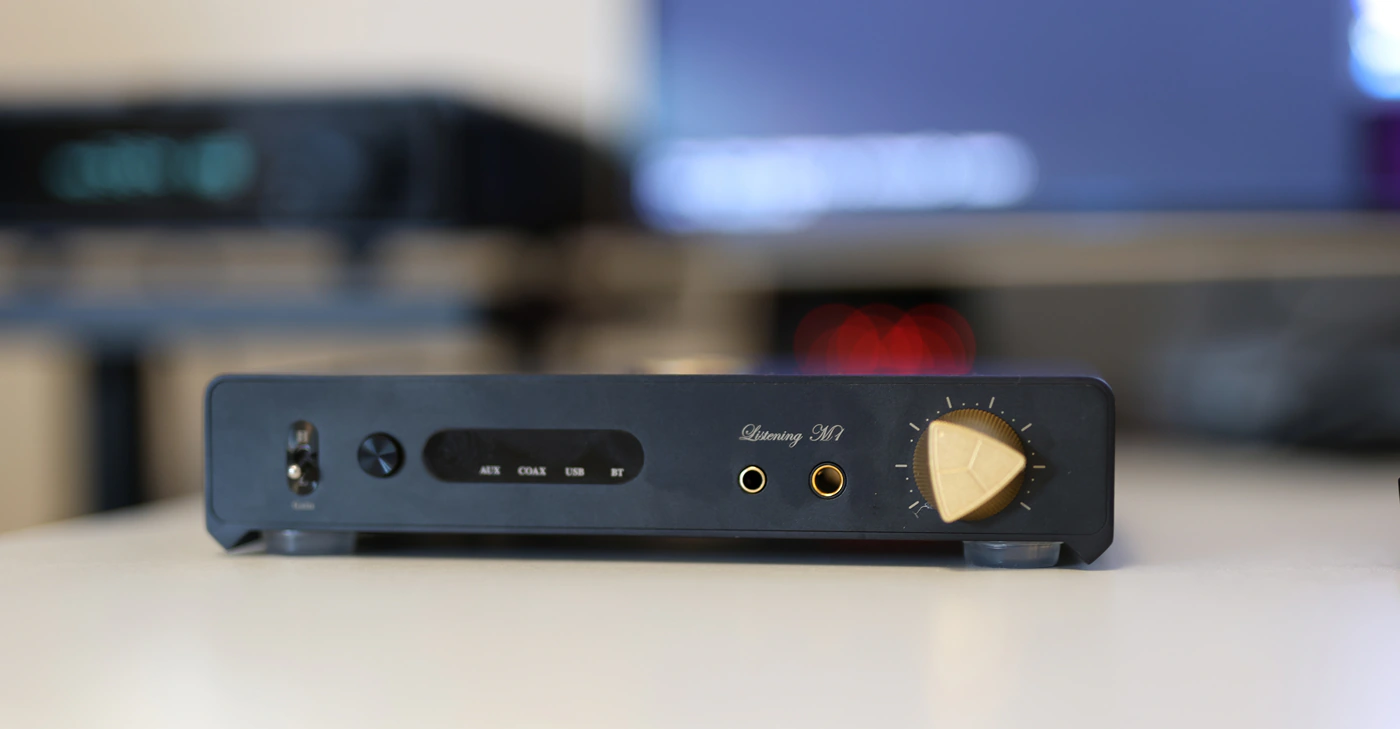
Volume Control – This is one of the best parts when reviewing a flagship, but M1 has excellent volume control. It stays consistent at all volume levels, there’s no loss of clarity and resolution at low volumes, but it can also stay clean and smooth, musical and pleasing at loud volumes without the dynamic range getting compressed, which makes listening at insanely high volumes all the more pleasing. There’s a good granularity to the volume control too, as it basically has 4 stages of volume, for IEMs being the IEM Mode with Low Gain, for easy to drive headphones or very stubborn IEMs being the IEM Mode with High Gain, and then for most headphones being the Headphone Mode with Low Gain, while the most power hungry headphones can sip electricity straight from the tap when you engage the Headphone Mode and the high Gain. You basically should be able to go from incredibly quiet to incredibly loud with basically any IEM or Headphone, without losing clarity, precision or punch. There is no perceivable sonic difference between those modes and gain levels, so you should not be afraid to use either, just go with the one that offers the best flexibility for your preferred listening volume.
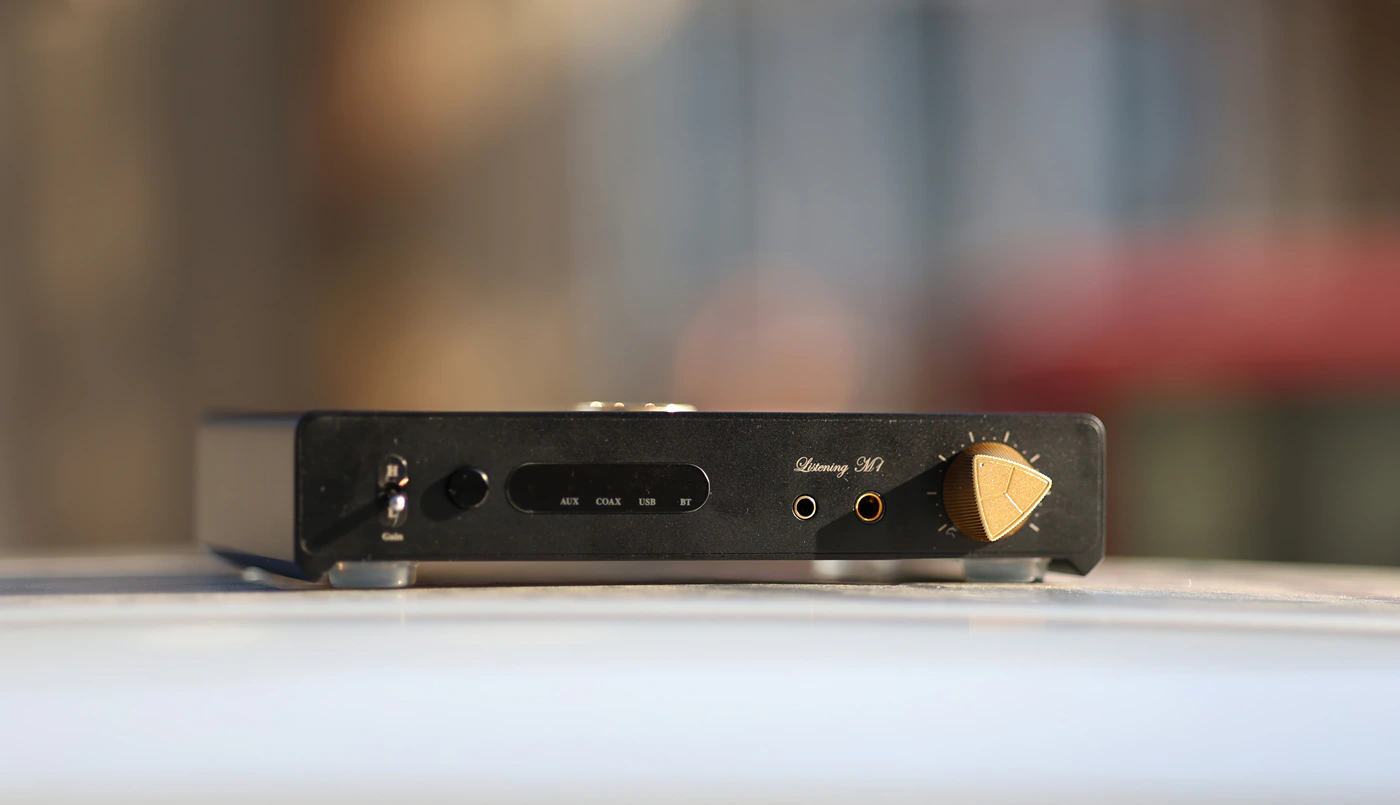
Treble – If a mature, refined treble, which is smooth, present but never fatiguing, relaxed and airy / extends up to 20 kHz, but never intrudes in your music sounds appealing, then Dethonray M1 Listening will be right up your alley. Even with ultra aggressive music such as Infant Annihilator, you won’t be bothered by the treble sharpness or brightness, even with IEMs like Sennheiser IE900, the treble just stays smooth, relaxed and easy to enjoy, despite it actually extending well in the highs and being present. There is a soft roll off effect for the treble, so you can expect the treble to be ever so slightly less audible the higher you climb in the frequency range, but we’re talking a few dBs at most. Basically, M1 is clearly not for those who want an aggressive or sharp / bright sounding DAC/AMP. Old music will sound enjoyable and lean, with the brightness present in albums such as Metallica – Reload being just a spice and the pepper to the sound, not a fatiguing or distracting element.
Comparisons
Dethonray Listening M1 vs Cyrus One Cast (2599 USD vs 2000 USD)
Build – From the start, One Cast has a much larger footprint on my desk, it is much heavier, consumes far more power, but the headphone amplifier runs in Class A, and it has a full sized Class D Speaker Amplifier, with a lot of driving power. This being said, the Bluetooth input of the Listening M1 is better, the DAC inside of Listening M1 is much better in driving power and has a much lower noise floor and better volume control in general. Cyrus One Cast only has a single ended output for headphones, while M1 has a balanced 4.4mm headphone output. The Line Out of Listening M1 has a higher quality, better resolution and generally lower noise than One Cast which is much noisier and where I’d only use the line out for driving a subwoofer, where you generally won’t hear the noise level quite as much, while Listening M1 can easily be implemented in a desktop rig.
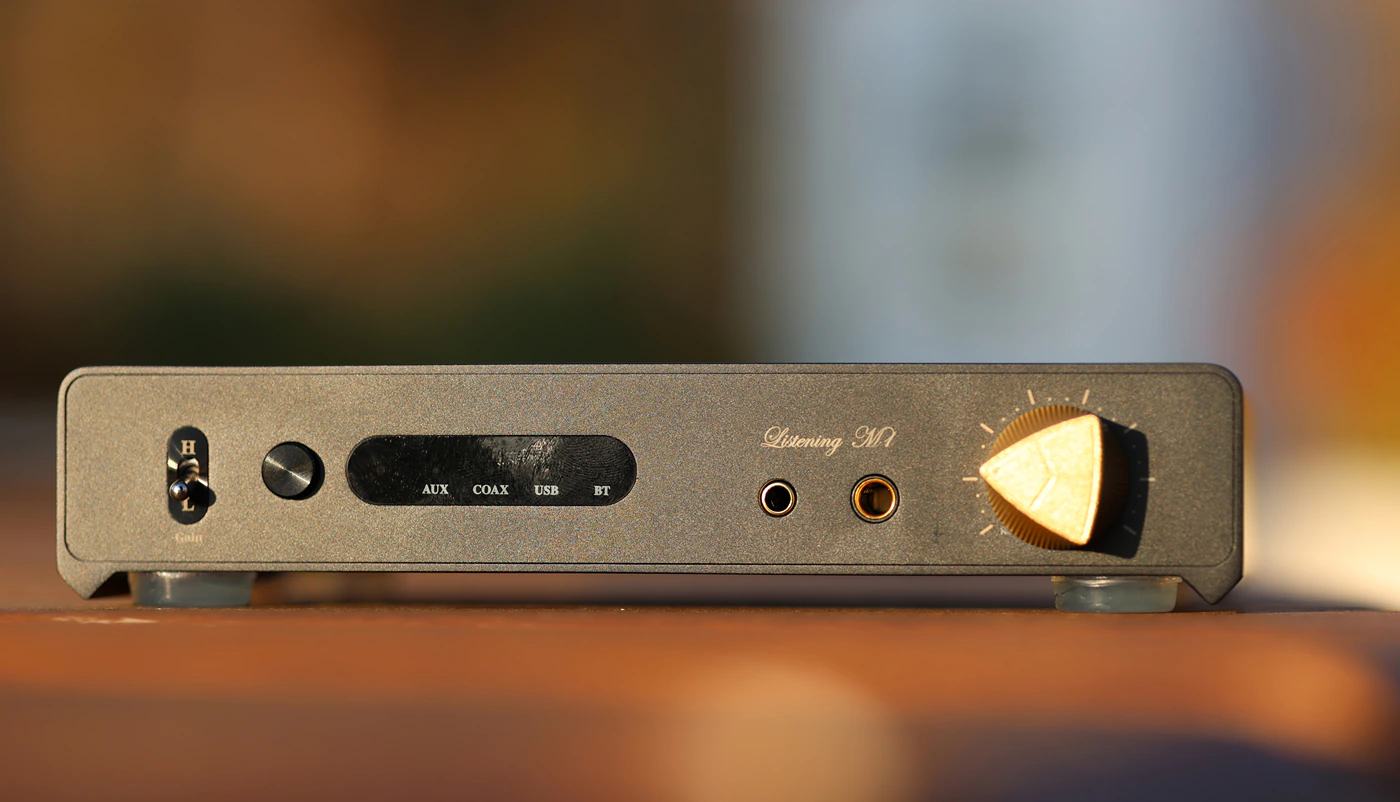
Sound – Sonically, One Cast has less detail, a brighter, sharper treble, but less bass and less smoothness, showing a bit of digital glare, especially if placed side by side with M1, both powering the same pair of headphones, or if both are used as DACs for an external amplifier. The downfall of Cyrus One Cast is the DAC it bears inside, it clearly has a lower resolution, and M1 sounds far more revealing, it has a deeper soundstage, a more natural depth, without forcing music to sound compressed, which I hear with One Cast a bit. If you need a DAC/AMP for headphones, Listening M1 is superior when driving both headphones and IEMs, it has a superior DAC, but it can’t drive speakers, and Cyrus One Cast has that advantage, although I subsequently found that I’d much rather use a better speaker AMP, preferably in Class AB or class A.
Dethonray Listening M1 vs iBasso DX320 MAX Ti (2599 USD vs 3499 USD)
Build – We have two about equally large devices, although DX320 MAX Ti is heavier, despite it being designed for portability. Listening M1 requires a PC or at least a smartphone to work, while DX320 MAX ti is a standalone DAP, and while both are capable, it is much more convenient to have DX320 MAX ti to enjoy music from a microSD slot, or for streaming, while the USB DAC function is better on the Listening M1 as there is no USB DAC delay. DX320 MAX Ti can drive both IEMS with absolutely no background noise, no hissing, and with a bit more control over the volume, and a bit more punch and dynamics, although Listening M1 is great too here. The maximum driving power for headphones is higher on the Listening M1, although both DX320 MAX Ti and Listening M1 have the volume set in 4 stages to cover for all IEMs and Headphones one might pair with them. DX320 MAX ti is user serviceable, while Listening M1 is not.
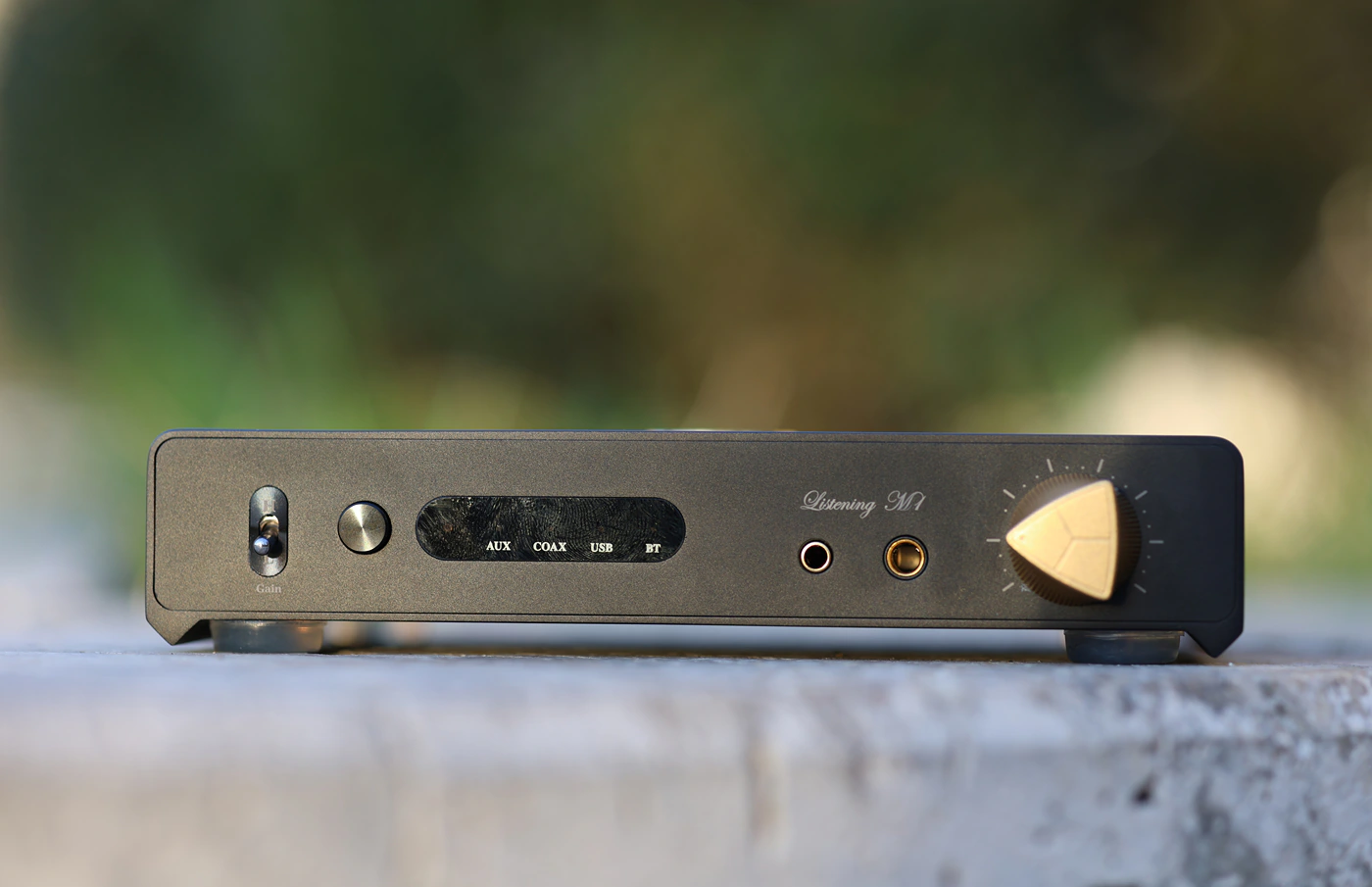
Sound – Sonically, they are similar in the smoothness and maturity / refinement of the sound, but the tuning is different, as DX320 MAX Ti focuses more on the dynamics, it brings out more energy in music, has a sharper, brighter and more brilliant treble, but less bass bloom compared to M1 which sounds rather warm and smooth. Both have a good resolution, and I’d be hard pressed to call one outright more detailed than the other, although there is a bit more high-end detail present with DX320 MAX Ti, while M1 brings out more in the bass, brings the low-end more in your face. DX320 MAX Ti sounds wider, while M1 sounds a bit deeper. I would grab the Listening M1 for the smoothest, creamiest sound, with the most bass, while I’d grab DX320 MAX Ti for a sharper, more neutral sound that stays more faithful to the original recording.
Dethonray Listening M1 vs Astell & Kern A&Ultima SP2000T (2599 USD vs 2500 USD)
Build – M1 is larger than SP2000T, and heavier too, while SP2000T is designed for portability, but still somehow manages to have a nuTube AMP iside, which is quite the feature. You have the option of enjoying SP2000T both Solid State or with the Tube sound, while with M1 you have a selection of Reference or Direct filter. SP2000T is made to be portable, and has a good working USB DAC, with no USB DAC delay, but as it has a nuTube it has a higher noise floor for IEMs, less driving power for headphones, and is generally best enjoyed with headphones and IEMs right in the middle, with an impedance higher than 32 OHMs, and SPL higher than 90 dB. Listening M1, on the other hand, handles both Audeze LCD-5 and Sennheiser Ie900 with ease, and can drive the extremes (very easy and very hard to drive) much better. It is always more convenient to use a DAP like SP2000T if you’re on the go, but for a full desktop system, M1 has both two headphone outputs, but also an RCA Line out with variable volume or Preamp at the back.
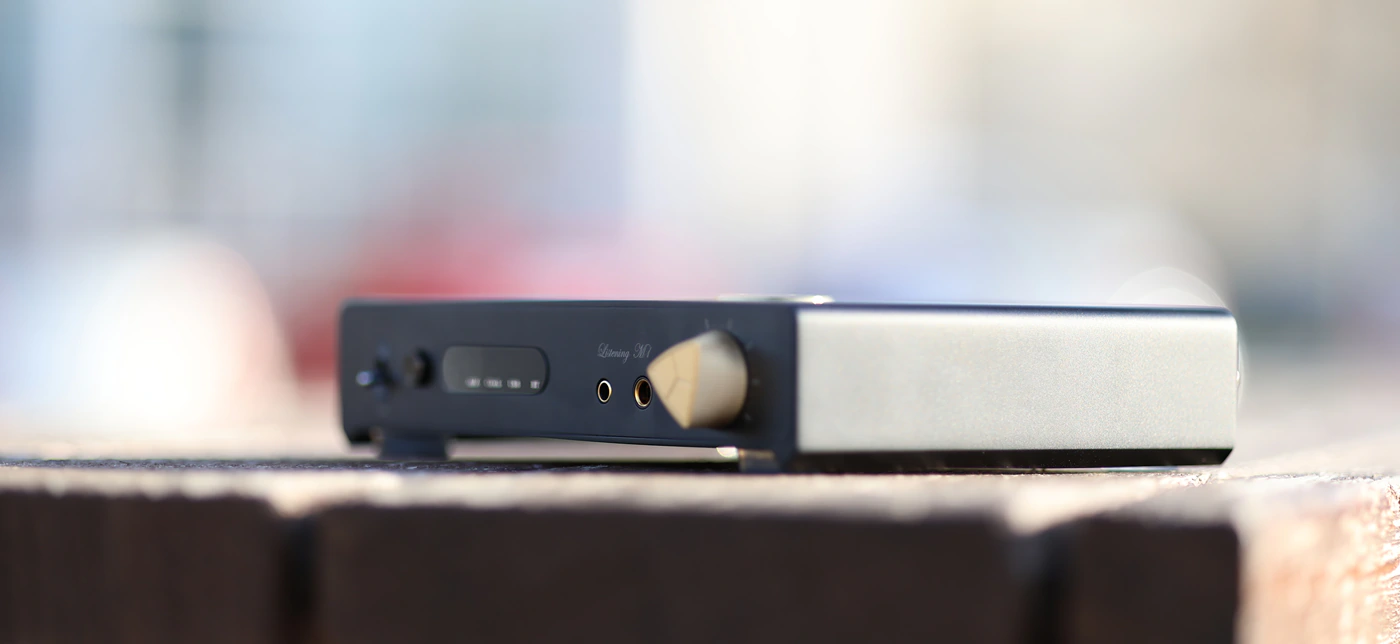
Sound – sonically, SP2000t has a warmer midrange, with the added tube distortion, and less detail, while M1 offers improved instrument separation, resolution and clarity, with less distortion in the midrange, a deeper bass, but a smoother treble with less energy and a more laid back / relaxed sound. Sp2000T sounds somewhat mid focused and mid centric compared to M1 which sounds bassy, has more bloom and warmth, and the whole sound extends more in the depth, M1 can show both narrower and wider sounding songs, without forcing a song to take on its tuning / signature. The dynamic range is higher on M1, but SP2000T can bring that tube sound that people rave about in a small form factor with no struggle.
Dethonray Listening M1 vs Smyth A16 Realizer (2599 USD vs 4000 USD)
Build – Smyth A16 is a much larger device, with a more imposing design, but also a very different principle, as it is using trackers placed on you to emulate a large stereo system in a limited room, working with heavy DSP or Digital Signal Processing for creating a wider, deeper soundstage, while being basically a DAC/AMP that can be a DAC for a full system too. Dethonray Listening M1 has a simpler design, and in general that’s desirable, as there are fewer parts that can go wrong. Both units have a good driving power, but Listening M1 has a higher driving power for hard to drive headphones, being able to handle both HE1000SE and LCD-5, while Smyth A16 is best used with HD800S at maximum as far as the maximum driving power goes. While I can’t really hear a noise floor with Listening M1 when driving IEMs and low impedance transducers, a16 has a rather high noise floor and it shows less control, with a brighter sound with IEMs, likely due to a high output impedance. M1 gets hotter during usage than A16, but both can handle sound in real time with no stuttering and no USB DAC delay.
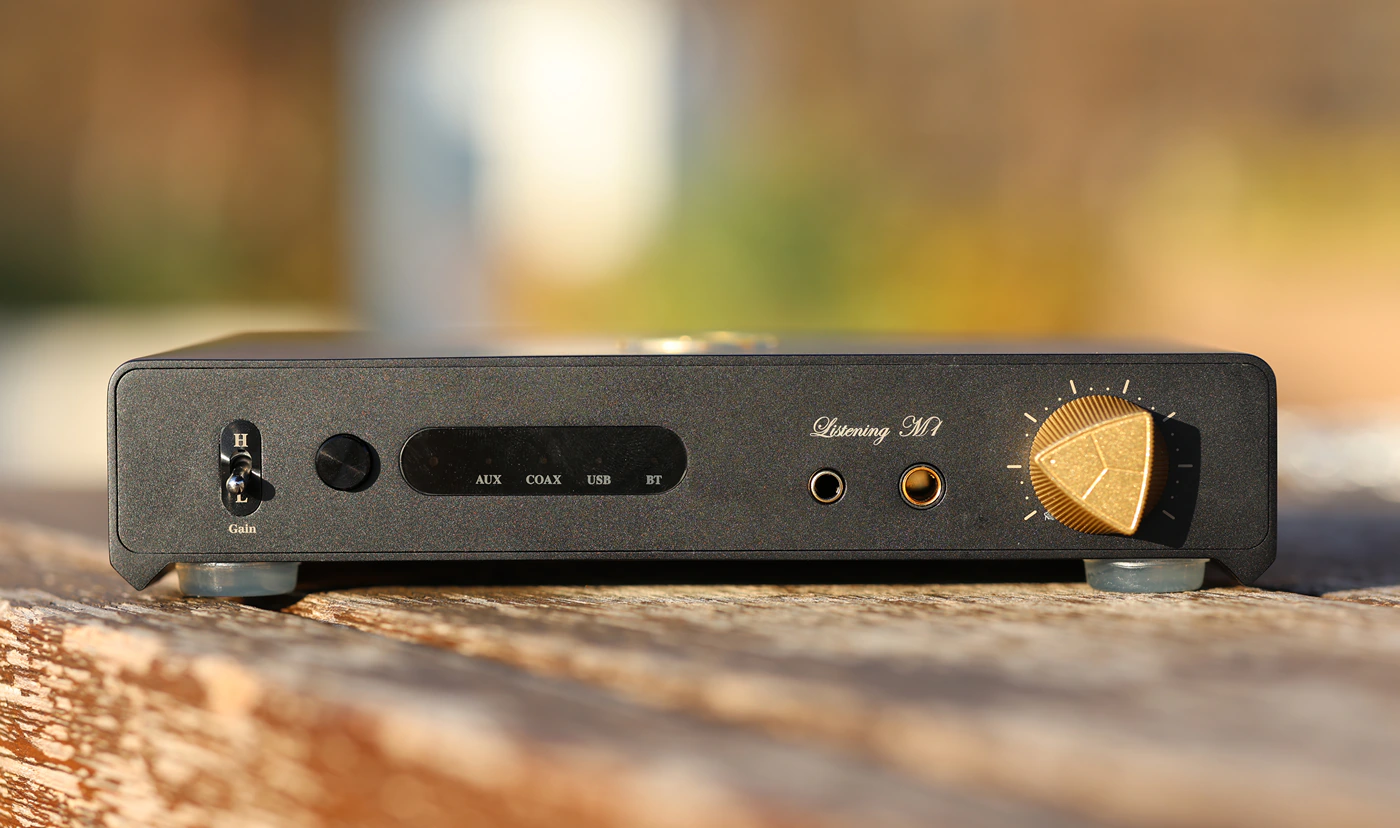
Sound – Sonically, if you manage to set up A16, which can take multiple attempts and needs to be reapplied from time to time, and if you’re using it with open-back headphones, the sound of A16 is wider, more holographic, brighter, sharper, more aggressive but has a pretty full bass too. By comparison, M1 always sounds smoother, with more mid bass bloom, a warmer midrange, smoother texture presentation, smoother treble, less treble sharpness and energy, but a fuller sound, and better depth to music, with lower distortion, and although A16 does a really good job with the software DSP processing, you can’t beat the natural sound of M1 if you’re looking for how music is actually supposed to sound and if you want less digital glare. A16 is a good DAC/AMP to get for the novelty, and if you like to tweak, if you want to widen the sound above what is possible solely through a traditional signal reproduction, while M1 is the ideal musical DAC/AMP that will paint music as it should be, clean, deep and smooth.
Dethonray Listening M1 vs Audio Analogue AAdac (2599 USD vs 4000 USD)
Build – AAdac is a much larger device, it has a single ended headphone amplifier, along with a high-end complex DAC inside, extreme tech installed, to create the most detailed, but also musical sound possible. There is Balanced output with the AAdac, and it does not have USB DAC delay, but neither does M1. For the DAC output, AAdac has a lower noise floor, but for headphones, M1 has a lower noise floor with both IEMs and Headphones, and better driving power for hard to drive headphones. Since AAdac is mainly a desktop DAC/AMP, I don’t really see anyone keeping it on a desk while M1 can find a place even in the tightest of spaces, and looks cool too.
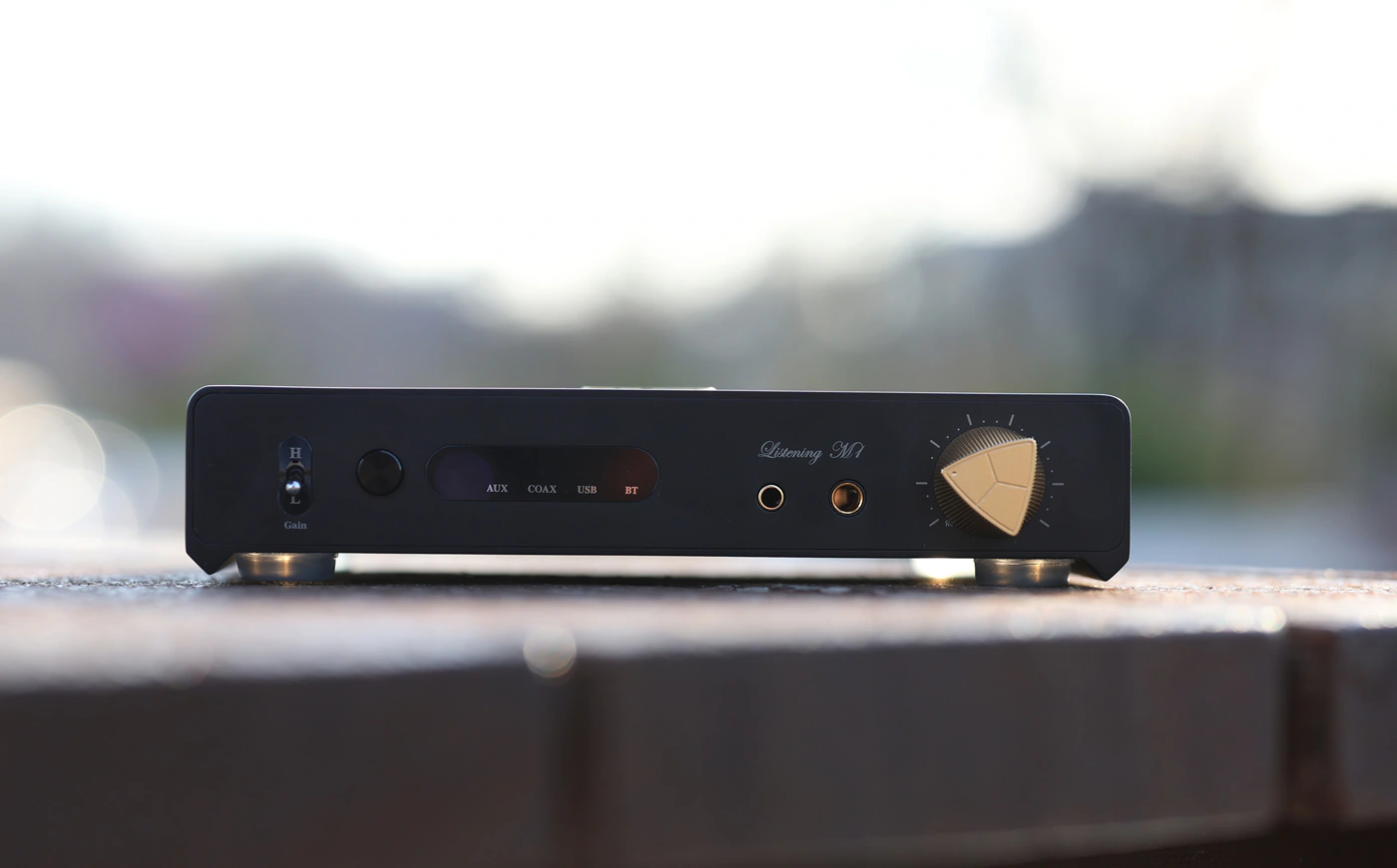
Sound – Sonically, we have to talk about the headphone driving part and the DAC parts separately, as both devices have separate performance in each. For driving headphones, Dethonray Listening M1 is a straight winner, it has a better control, lower noise floor, better dynamics, deeper, fuller bass, better instrument separation, and better clarity. While saying all of this, AAdac sounds great too, a bit brighter and more aggressive, but the smoothness, musicality and overall instrument separation / definition of M1 is better, it clearly is the winner. When used as a DAC, AAdac has the advantage of having XLR Balanced outputs, also a more brilliant sound, better resolution, a wider soundstage, improved clarity, while M1 sounds smoother, softer, laid back and more relaxed. The pairing will be extremely important here, if you have a dull and dark sounding pair of speakers, AAdac can bring those to life and open them up, while if you already have brilliant and sharp sounding speakers with a strong treble, Dethonray Listening M1 can improve the bass, add more instrument body, a bit of extra bass bloom, it can soften the sound slightly and make everything more musical. DACs for a speaker system can make a larger difference if paired properly, which may be why there are really pricey and large DACs available for stereo systems, but less so for headphone systems.
Dethonray Listening M1 vs Keces S3 (2599 USD vs 1300 USD)
Build – Keces s3 follows the same direction as all the other DAC / AMPs in the review list today, it is much larger, heavier and takes far more space on my desk than the M1, which is trendy and chic in design. Both units have a clean headphone output, with low noise, although S3 has a higher output impedance, and less volume control for IEMs, while M1 is better if your collection includes both headphones and IEMs. For hard to drive headphones, both have extreme amounts of driving power at maximum, and both have a good dynamic range. The DAC output of S3 has Balanced XLR outputs, which are inherently less noisy than the RCA outputs of the M1. Keces S3 gets hotter during usage than M1 which stays a bit cooler. Both have zero delay if used as USB DACs, both work flawlessly, although M1 has Bluetooth input with LDAC, which is not present on the S3. There is a big price advantage for S3, which is half the price of M1.

Sound – Sonically, they are very different, with Keces S3 sounding far brighter, more brilliant, wider, more holographic and sharper, while M1 sounds warmer, thicker, bloomier, with more mid bass, a smoother treble, a deeper bass, and more bass with IEMs and Headphones. For the DAC output, if you’re using RCA with both, the noise levels are comparable, but S3 can be quieter if you’re using the XLR outputs (this is a limitation of the RCA vs XLR design). The DAC signature is still smoother, more relaxed and warmer on the M1, while it is sharper and brighter on the S3, although M1 has a more refined sound, with a cleaner treble edge, while S3 sounds more direct.
Pairings
Dethonray Listening M1 + Campfire Bonneville (2599 USD +1399 USD) – I love the brilliant sound of Bonneville, it is V-Shaped, fun and punchy, without any risk of becoming harsh or sibilant, but with a fun and punchy bass, so M1 is a natural pair for it, giving the Bonneville a spacious, wide and holographic sound with a better instrument separation than all other sources, improved space and dynamics, all while keeping them noise-free and distortion-free even at incredibly loud levels. The pairing shows an organic and smooth voicing, pleasing reproduction of synths and electronic effects, plus a level of detail I wouldn’t have thought Bonneville is capable of.
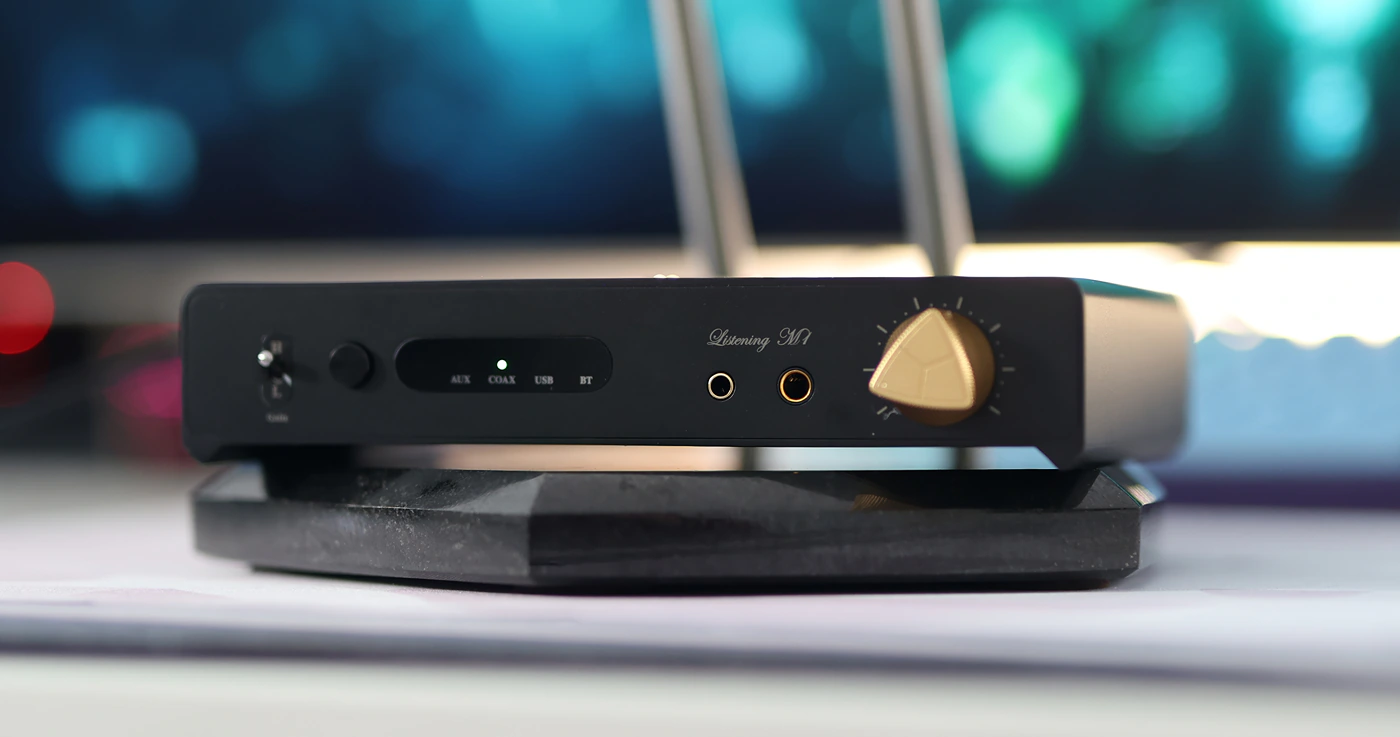
Dethonray Listening M1 + HIFIMAN He1000se (2599 USD +3500 USD) – There is no better headphone to pair with Listening M1 to showcase both its extraordinary bass reproduction, but resolution, dynamics and details too, as HE1000SE shows one of the best bass depths, soundstage depths and smoothest, most beautiful voicing I’ve heard coming from it, while M1 has no issue driving the mega headphone with ease. You do have to engage the headphone mode, but once that’s done, you have plenty of power even in low gain, and you can literally reach 110dB with zero distortion. Even when you push it into technical death territories, you get a quick, precise drum reproduction, and a musical, smooth lead guitar, with good separation between forward and background voices.
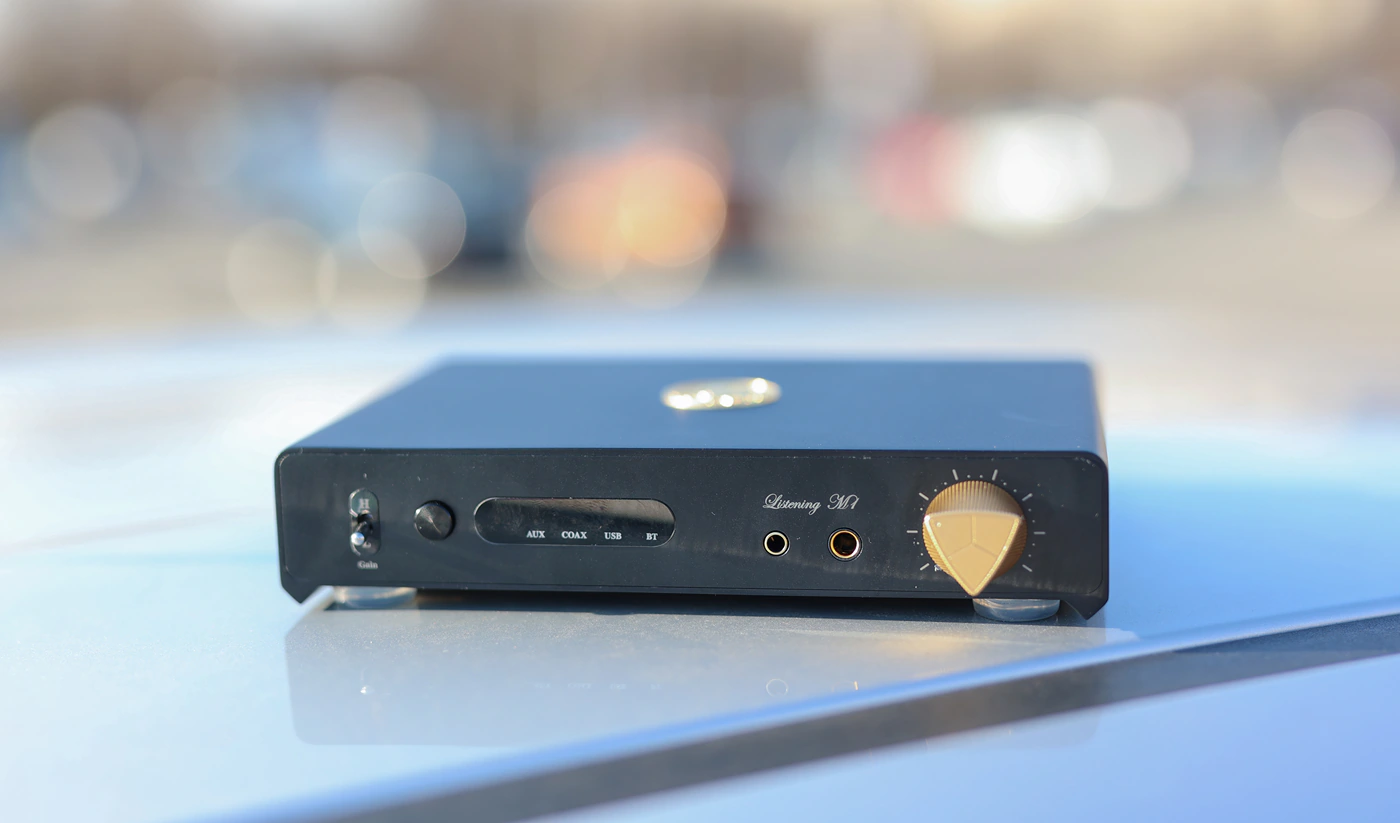
Dethonray Listening M1 + FIR Audio e12 Electron (2599 USD +1799 USD) – You may be afraid to pair a full-on basshead IEM with the listening M1, knowing it is one of the smoothest, warmest sounding DAC/AMPs out there, but e12 actually makes a beautiful pair with it, lush, deep, and wide sounding, as M1 allows e12 to gain one of the best resolutions I’ve heard coming from them, a musical midrange, and that full, lush bass not just touching but playing cheerfully at 20 Hz. Each musical note in the midrange is reproduced faithfully, with outstanding precision, but the edge is all musical, organic and smooth, full and lush, the sound becomes rather thick and choky, but it is still detailed and precise, allowing for a coloration I would say I enjoy greatly. With no background hissing or noise, even when using the balanced 4.4mm jack, but with good dynamics, the pairing always makes me smile and enjoy all kinds of styles, from EDM to pop all the way to dubstep and rock.
Value and Conclusion
Dethonray Listening M1 is a high-end flagship DAC/AMP made for the pickiest listeners who want to hear the ultimate musicality, resolution and detail, and it makes no compromise when it comes to sonics, style, design but also pricing, as the price reflects the quality, and it has a strong performance for a price on par with that performance, and to have better you simply have to pay a bit more. Especially as Dethonray is a boutique company making only a few of those, performance testing each by hand, I would say the price / performance ratio is good.
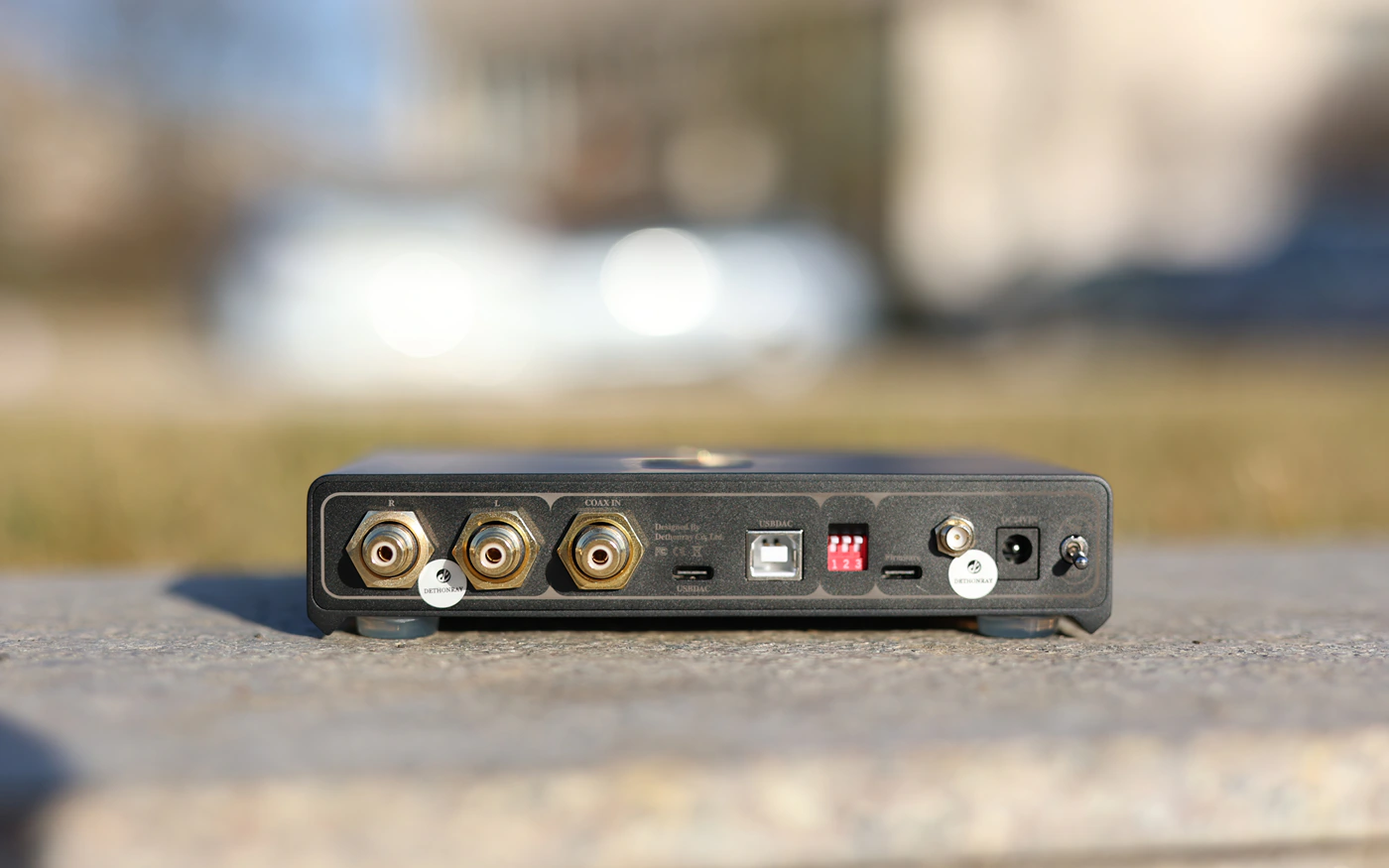
Before the end of the day, for its exceptional build quality, sonic performance and design, I want to add the Dethonray Listening M1 to the Audiophile-Heaven Hall Of Fame. It really deserves this award, and offers performance basically unmatched regardless how much you’re ready and willing to spend on a DAC/AMP, a unique tuning and best of all, everything in a smooth and ergonomic package.
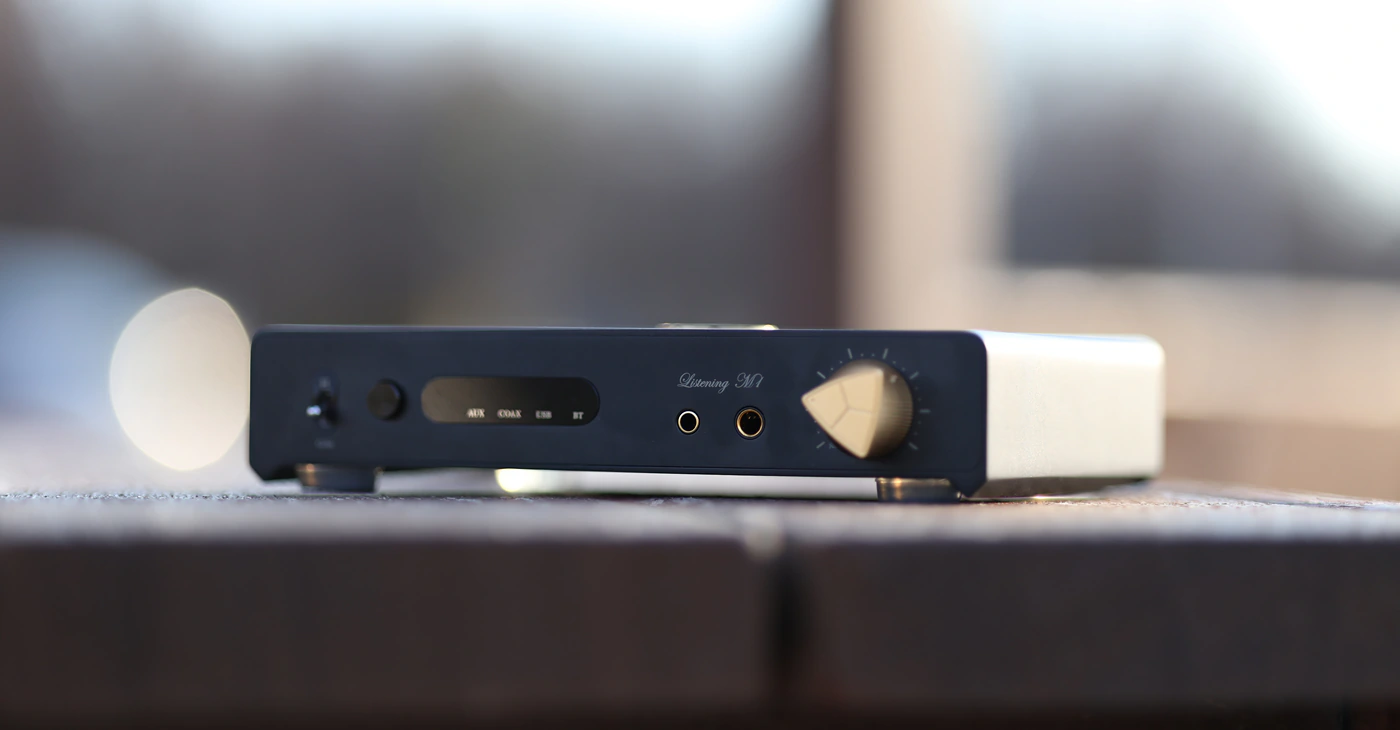
At the end of the day, if you’re looking for the ultimate smoothness, resolution, clarity and musicality in sound, if you want exceptional and unparalleled driving power, for an ergonomic and beautiful device, and all with the golden level of support Dethonray offers, I recommend the Listening M1 as the ultimate listening DAC/AMP, it is a rather excellent and beautiful sounding unit.
Product Link
Check out the Official Dethonray Shop – https://www.aliexpress.com/item/1005006576672840.html
You can grab one from www.amazon.com here – https://amzn.to/3WcRsd5
--- Please remember to stay safe, and always have fun while listening to music!---
- If you have a dime to spare, please donate, and help us! It would make the day brighter for me and my wife-
Full Playlist used for this review
We listened to more songs than those named in this playlist, but those are excellent for identifying a sonic signature. I recommend trying most of the songs from this playlist, especially if you’re searching for new music! The playlists are different for Spotify, Tidal and Youtube, and based on the songs I enjoy and are available on each!
https://www.youtube.com/playlist?list=PL_cjBXGmwSHSdGcwuc_bKbBDGHL4QvYBu
https://open.spotify.com/playlist/5J3oloz8Riy9LxEGenOjQ0?si=979ba4f082414be7
https://tidal.com/browse/playlist/330fd544-8e5b-4839-bd35-676b2edbb3d5
--- Contact Us ---





